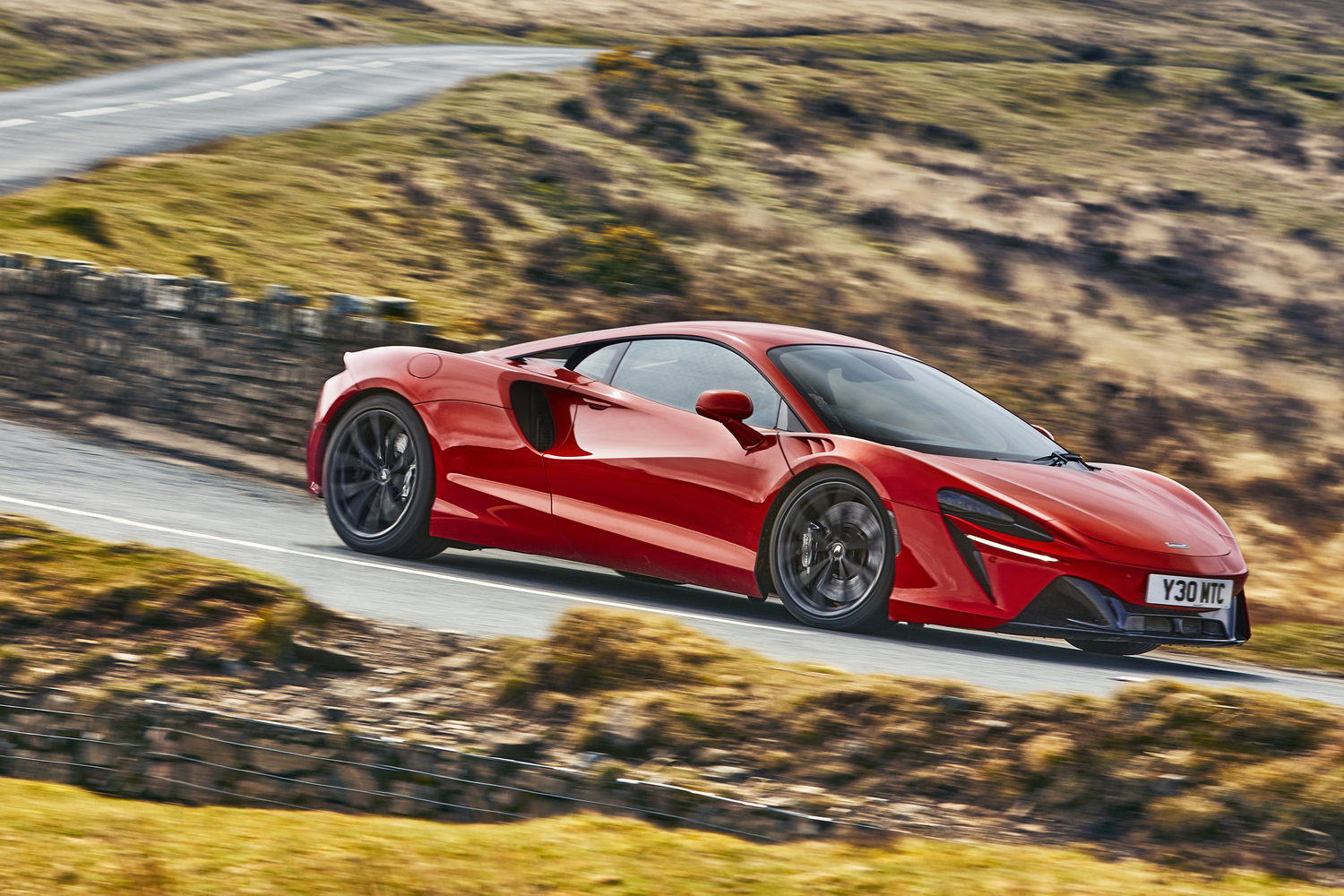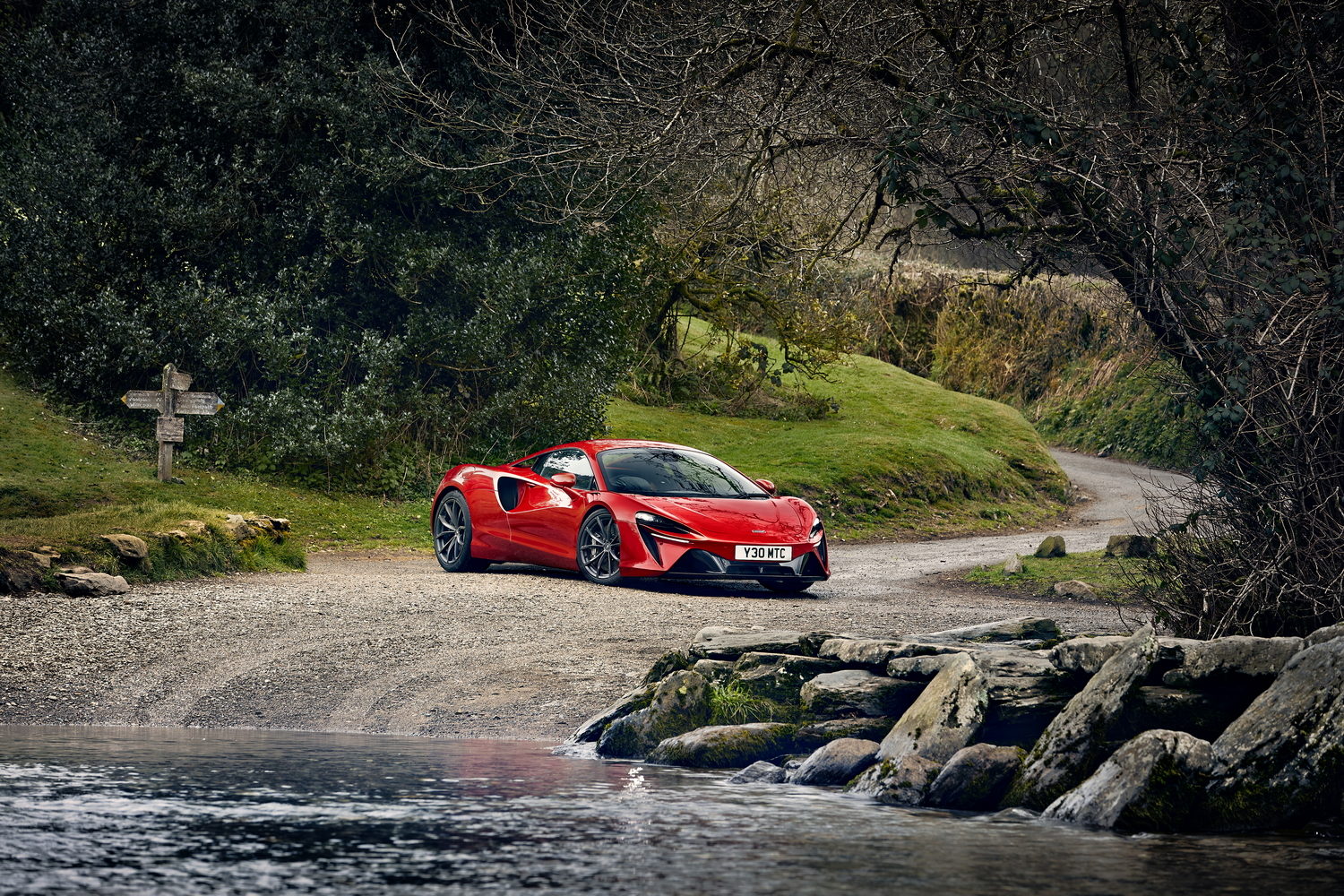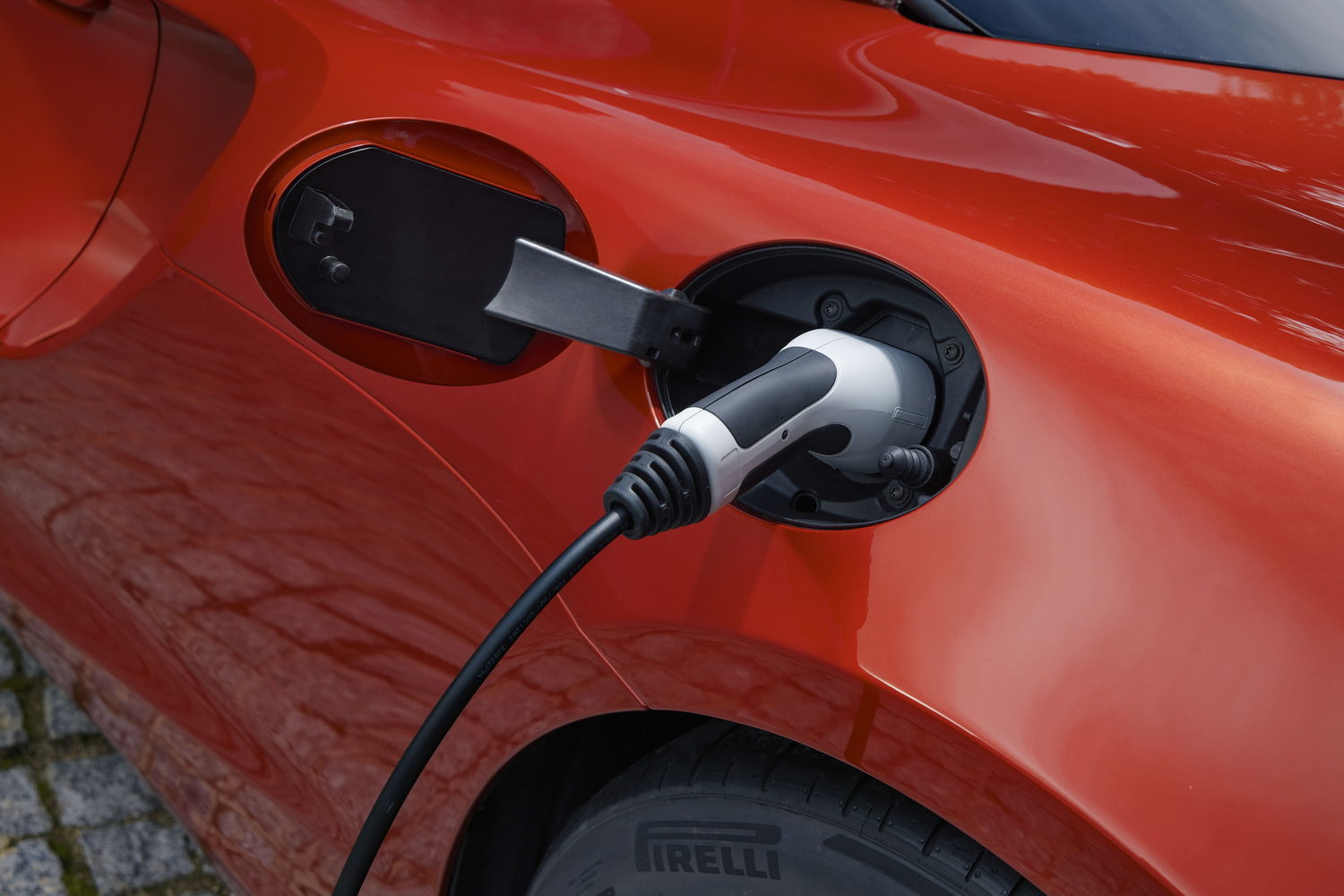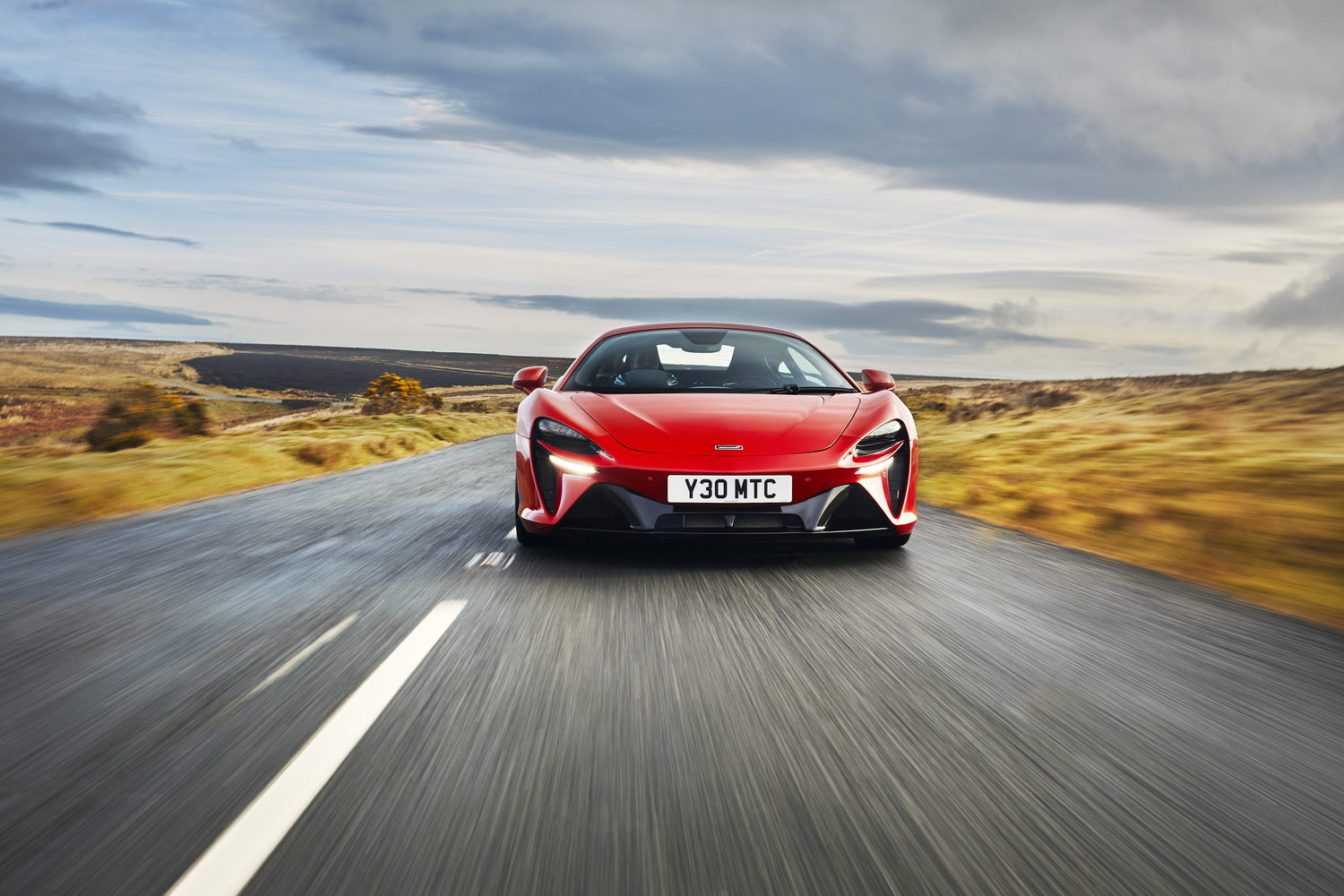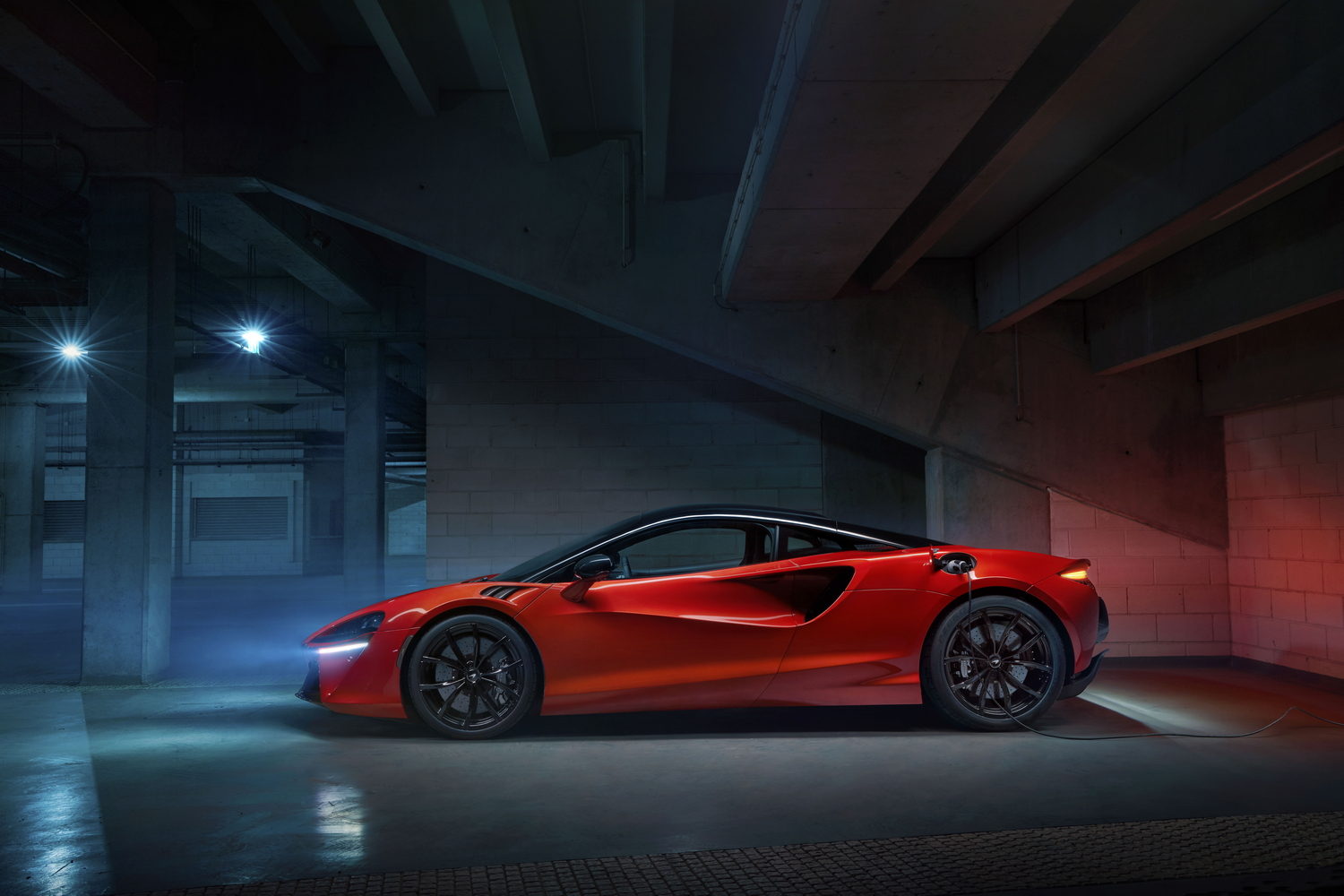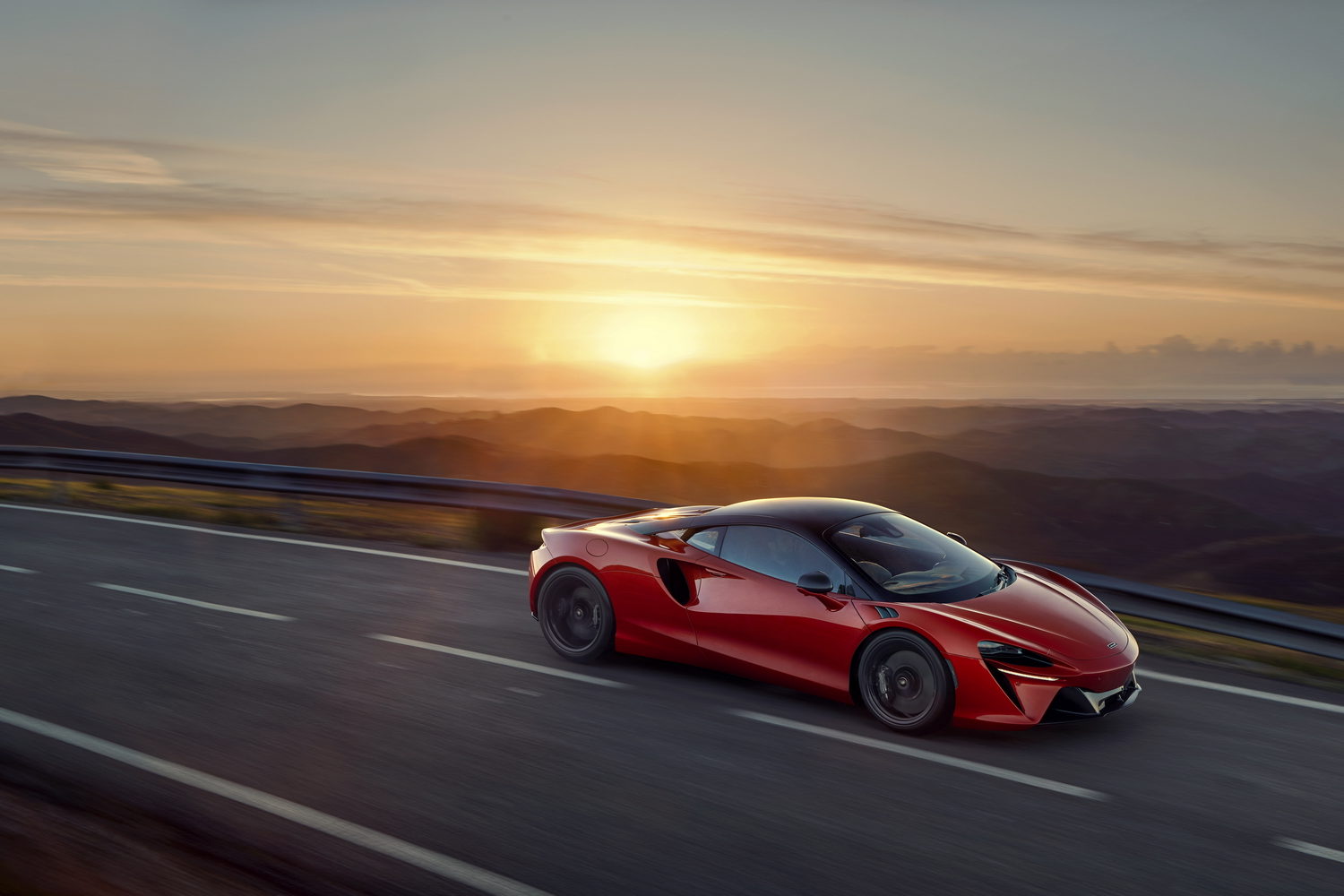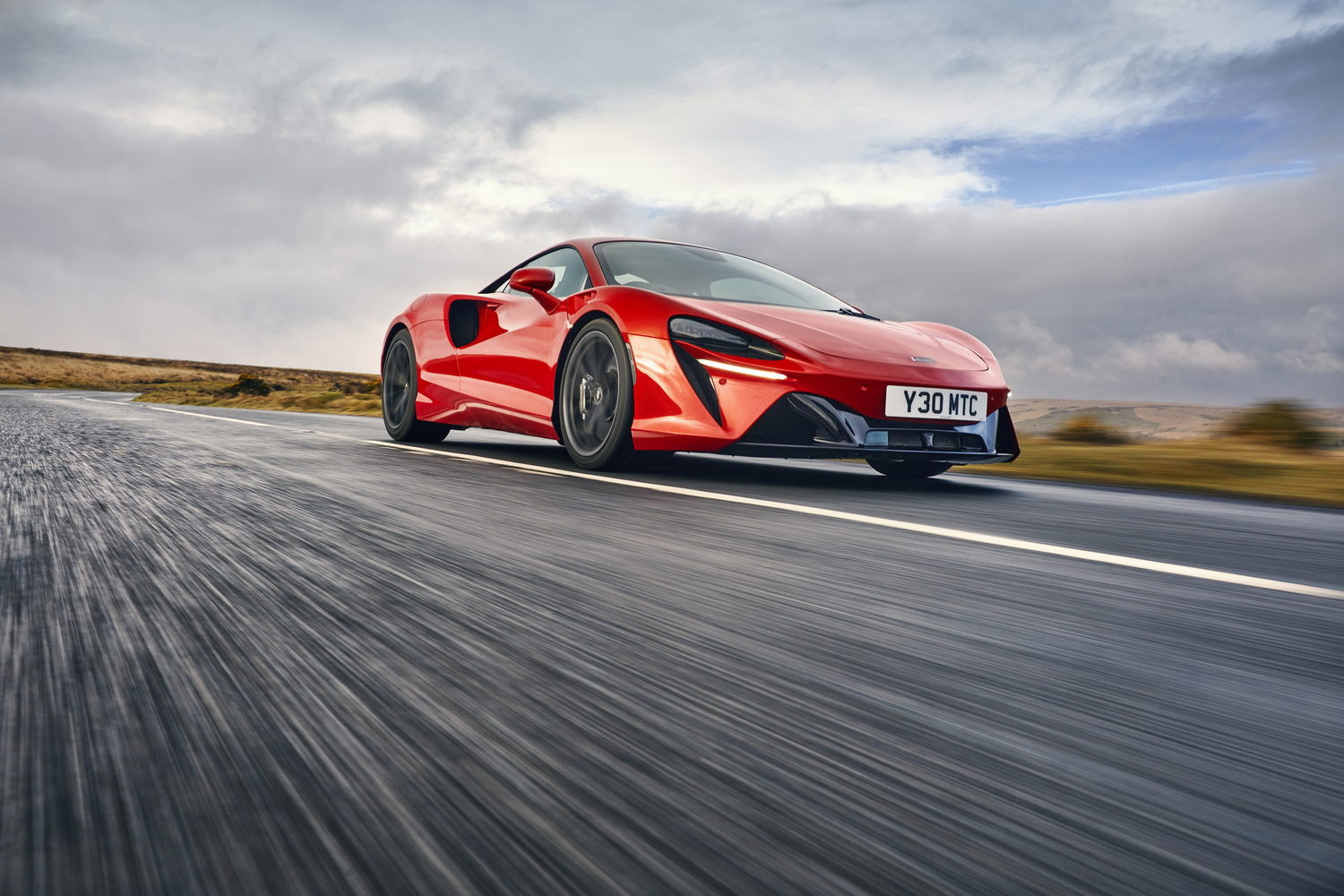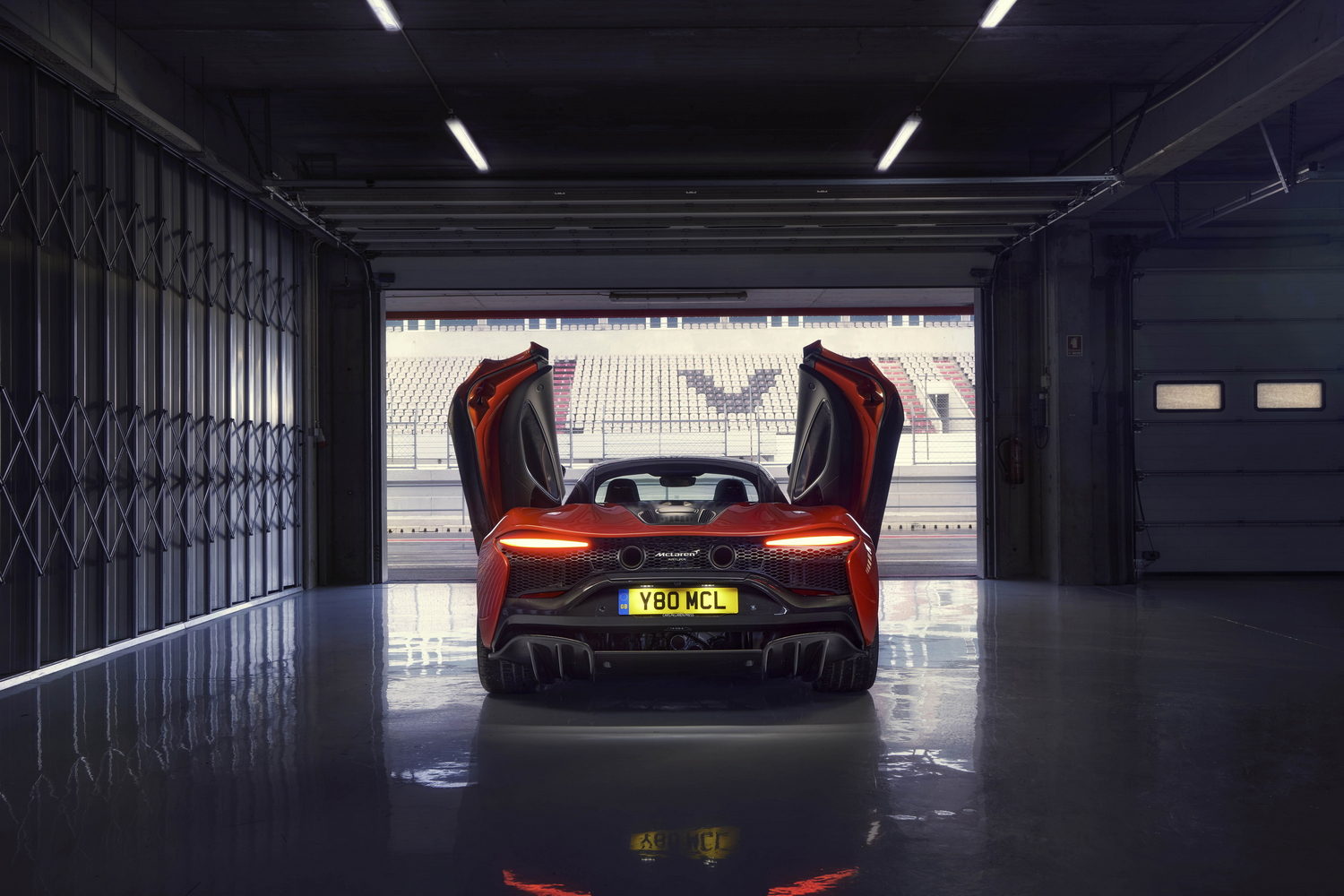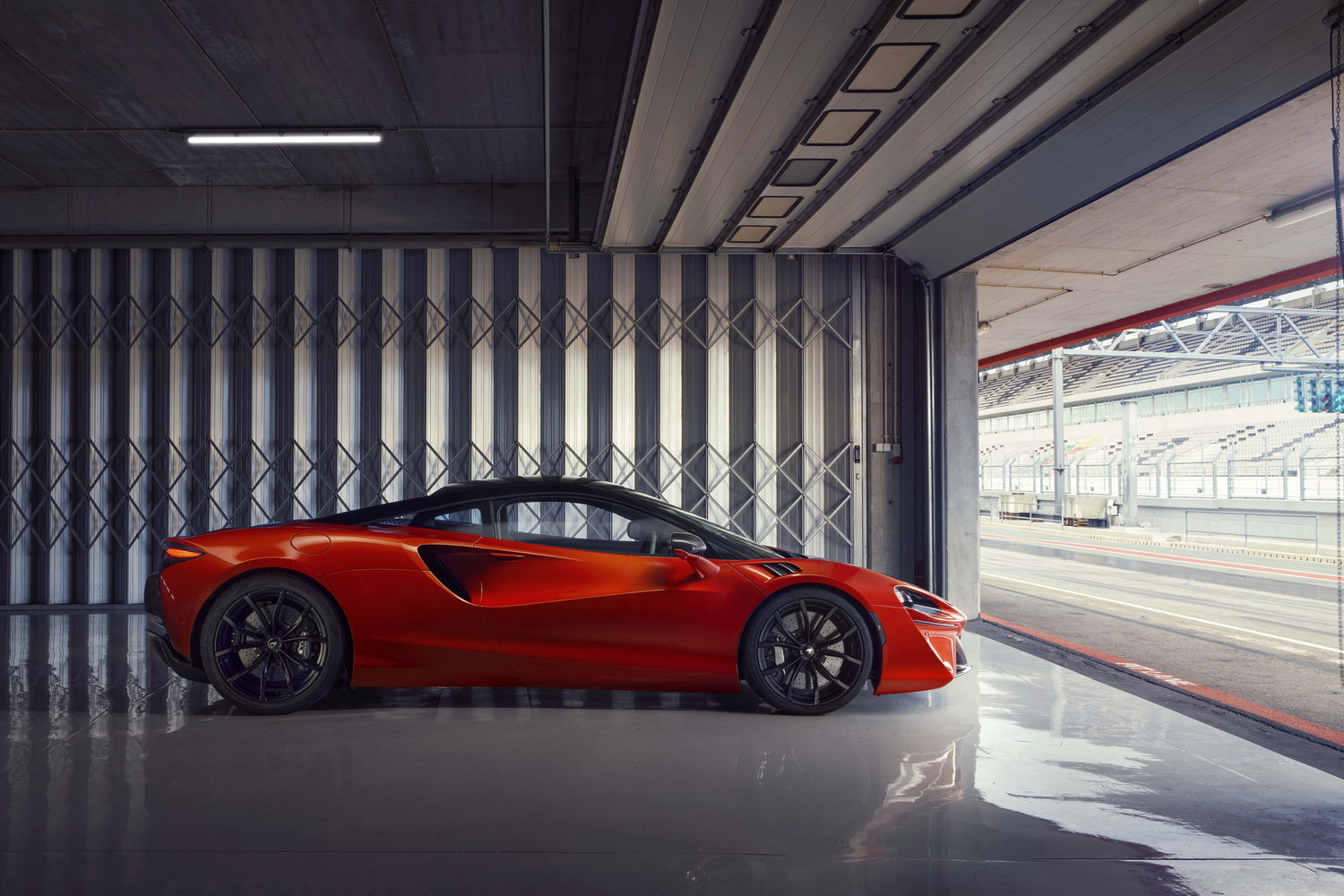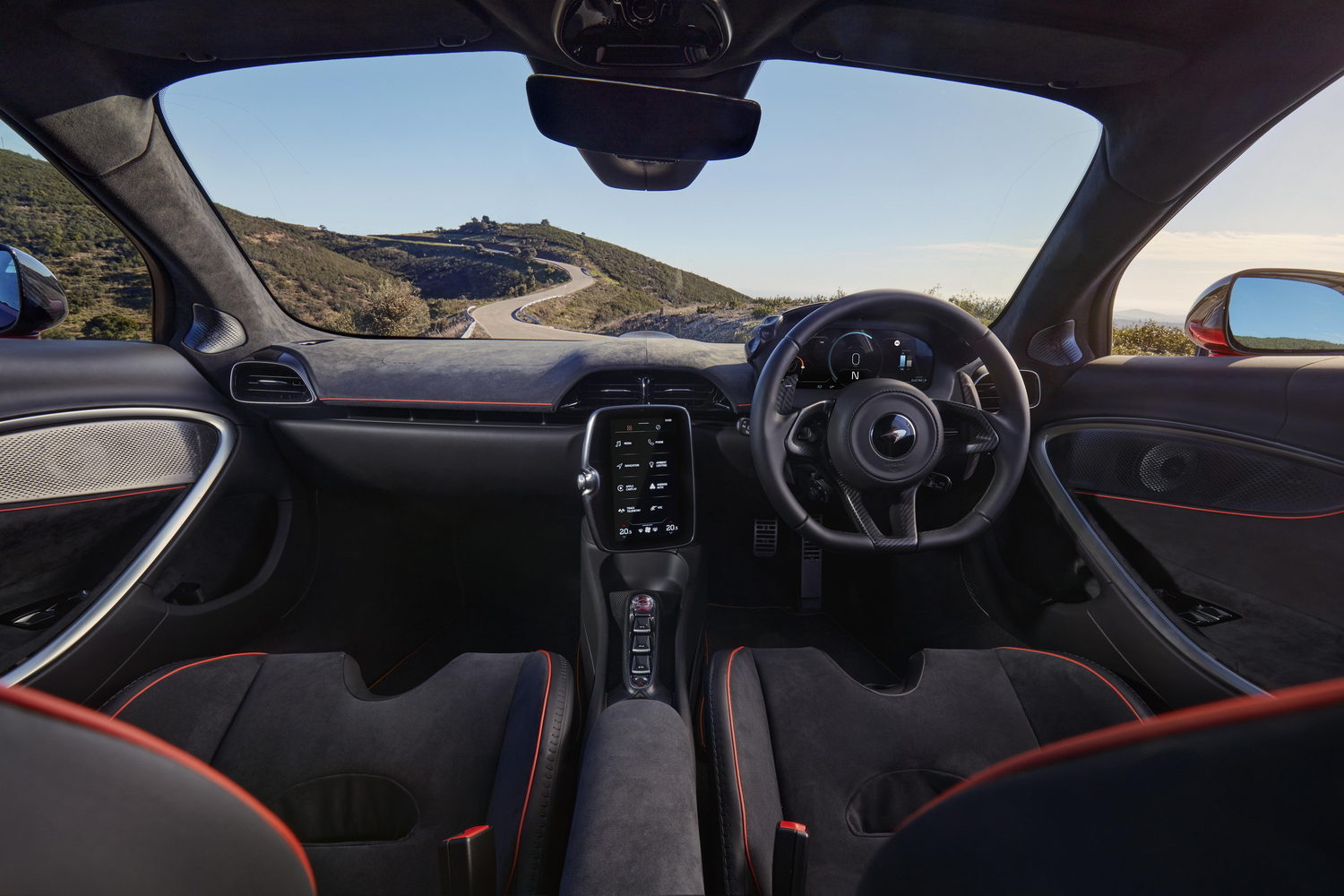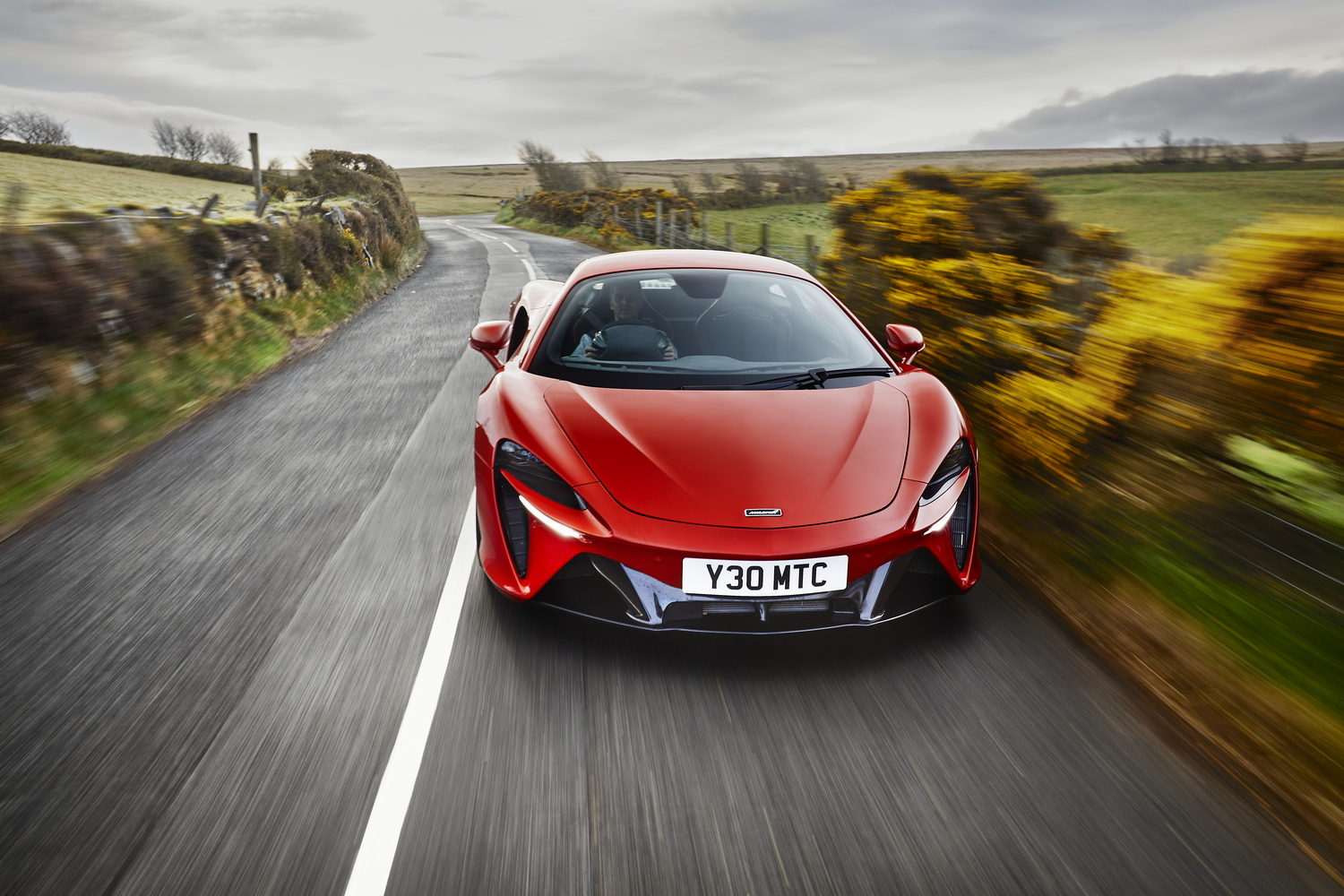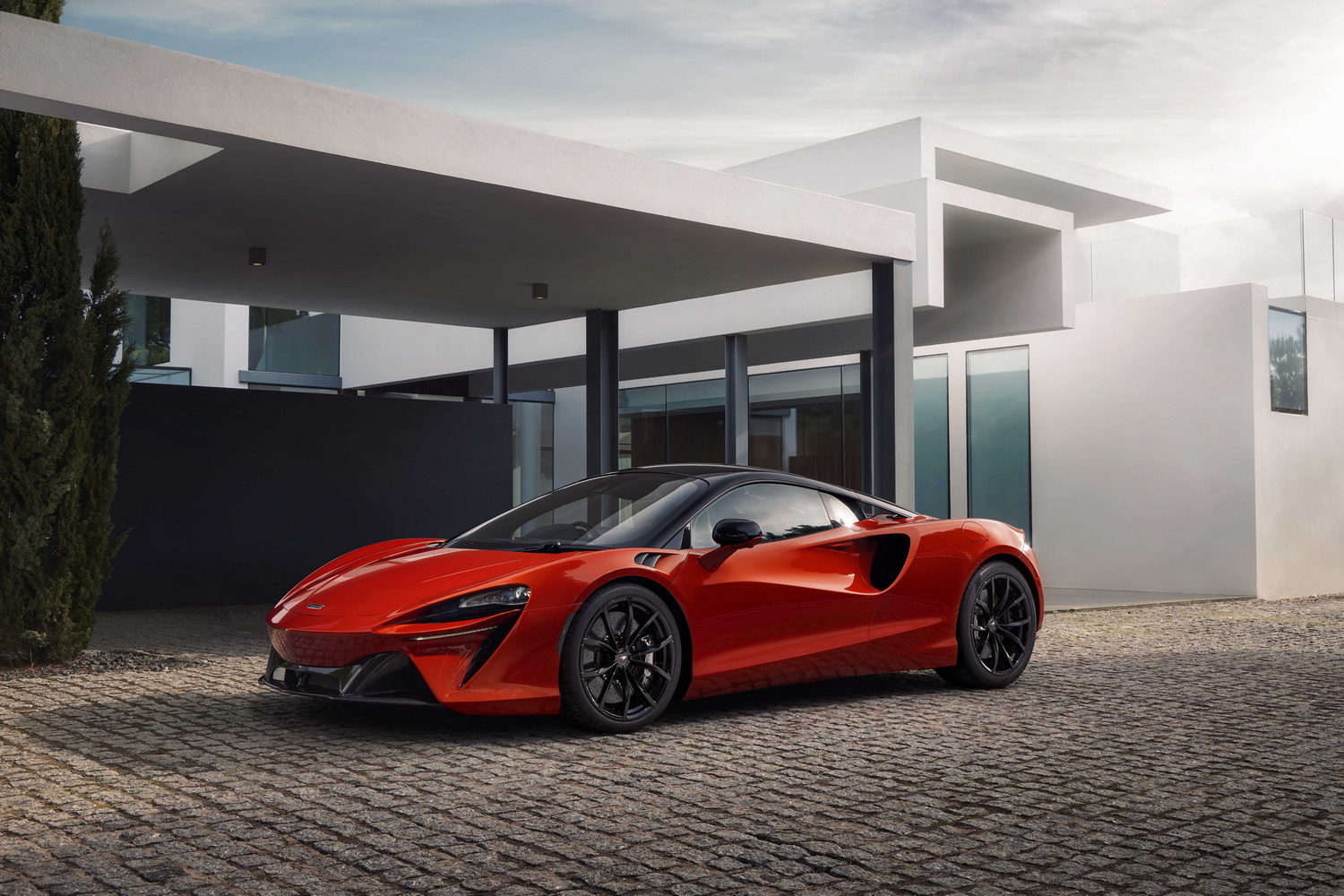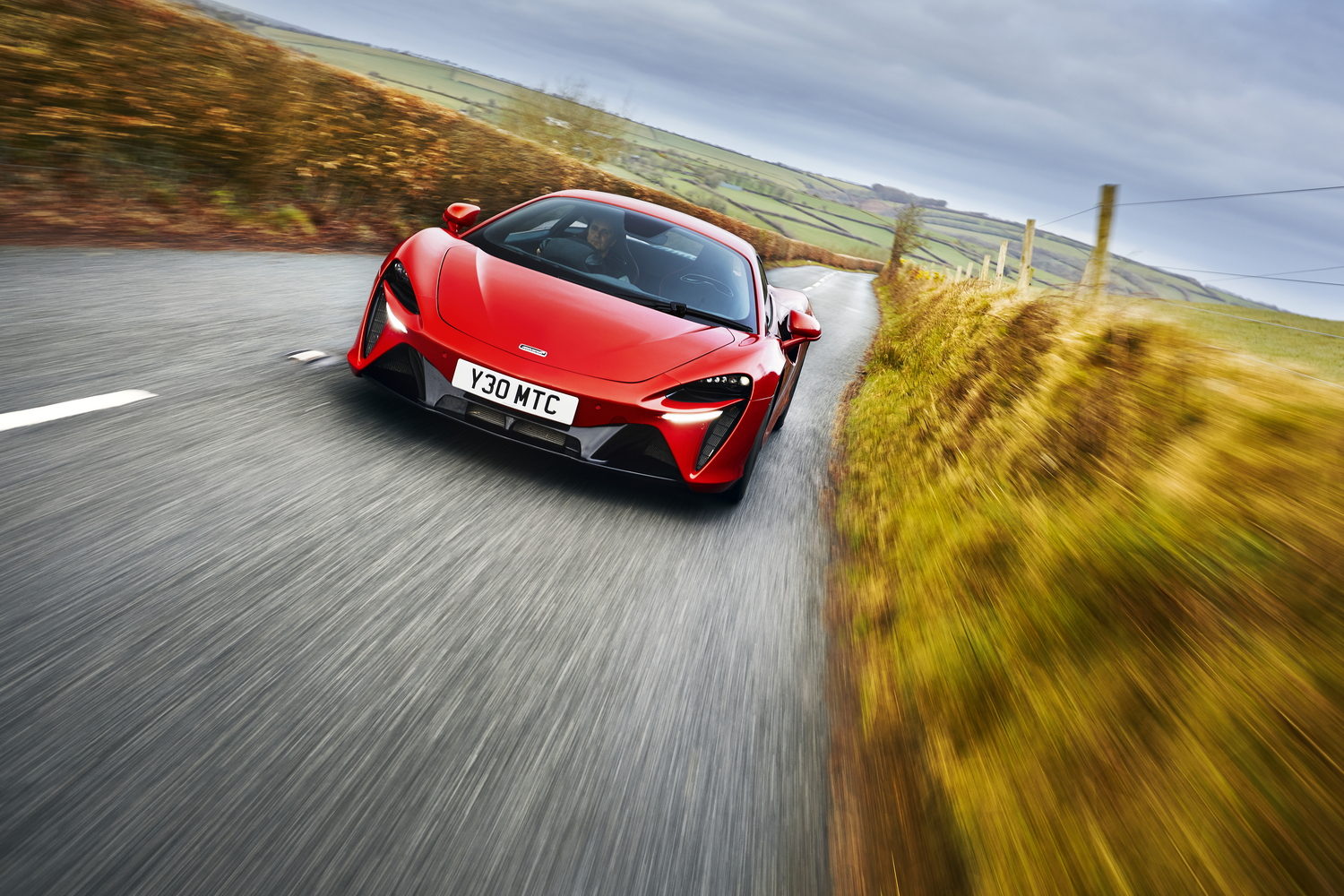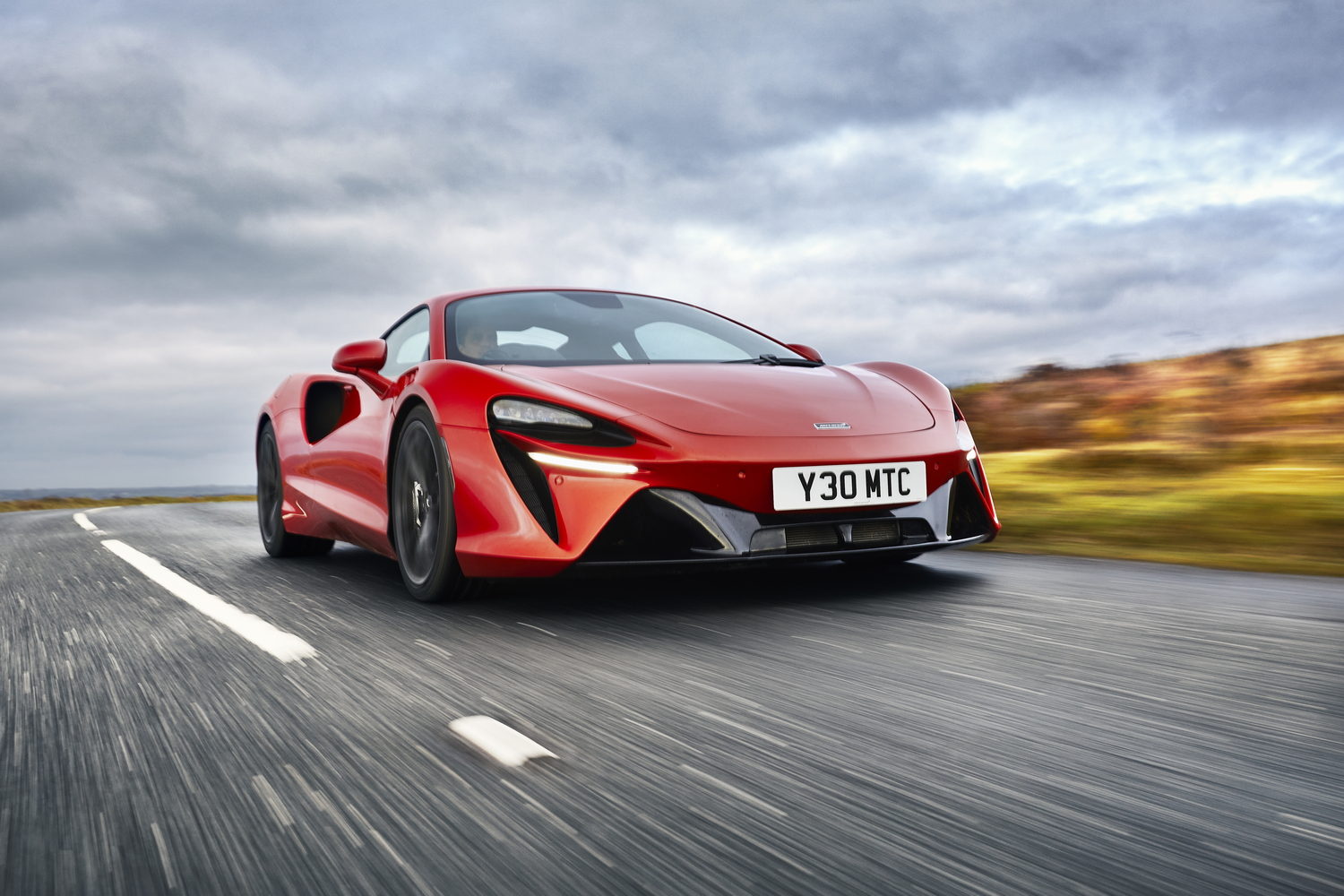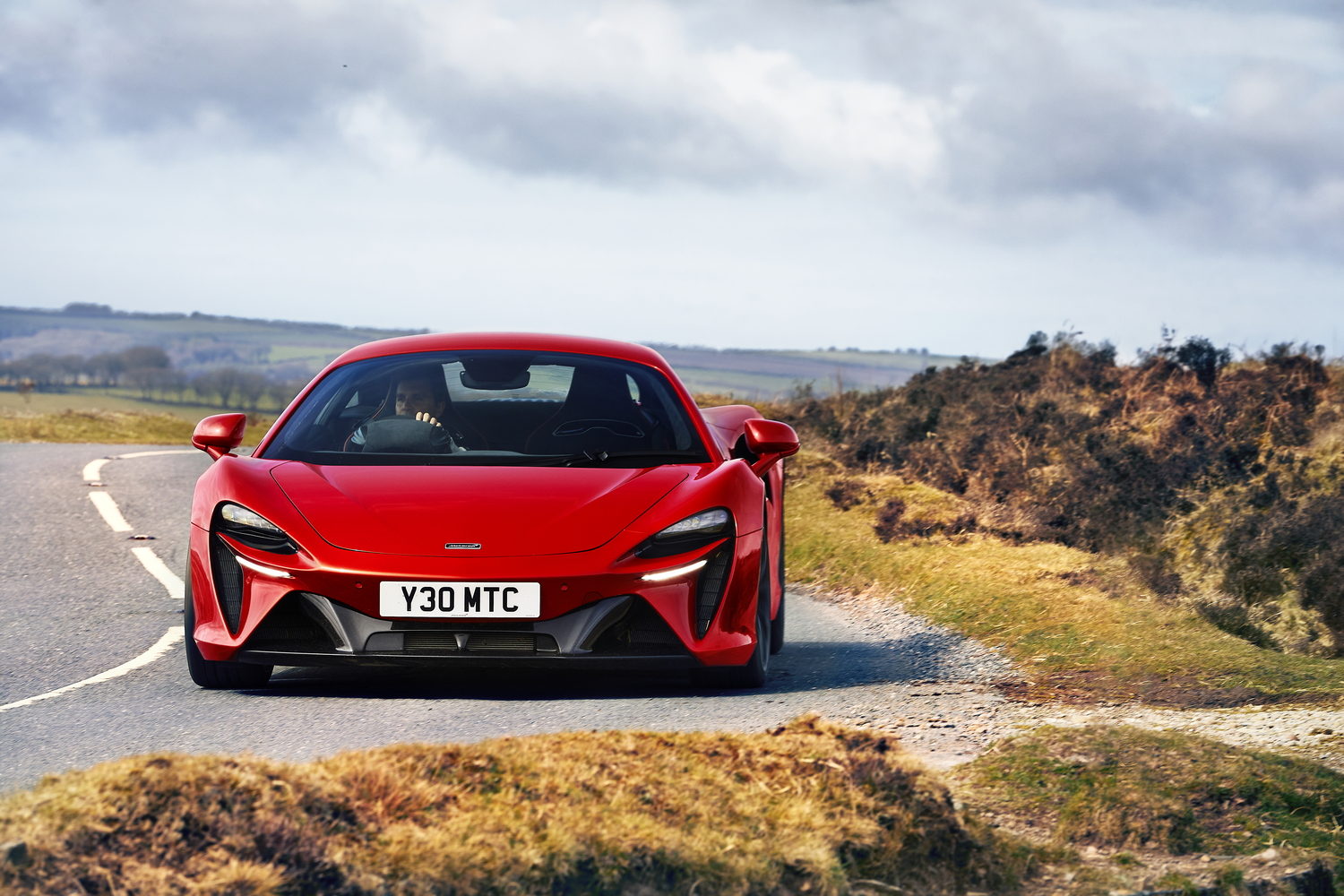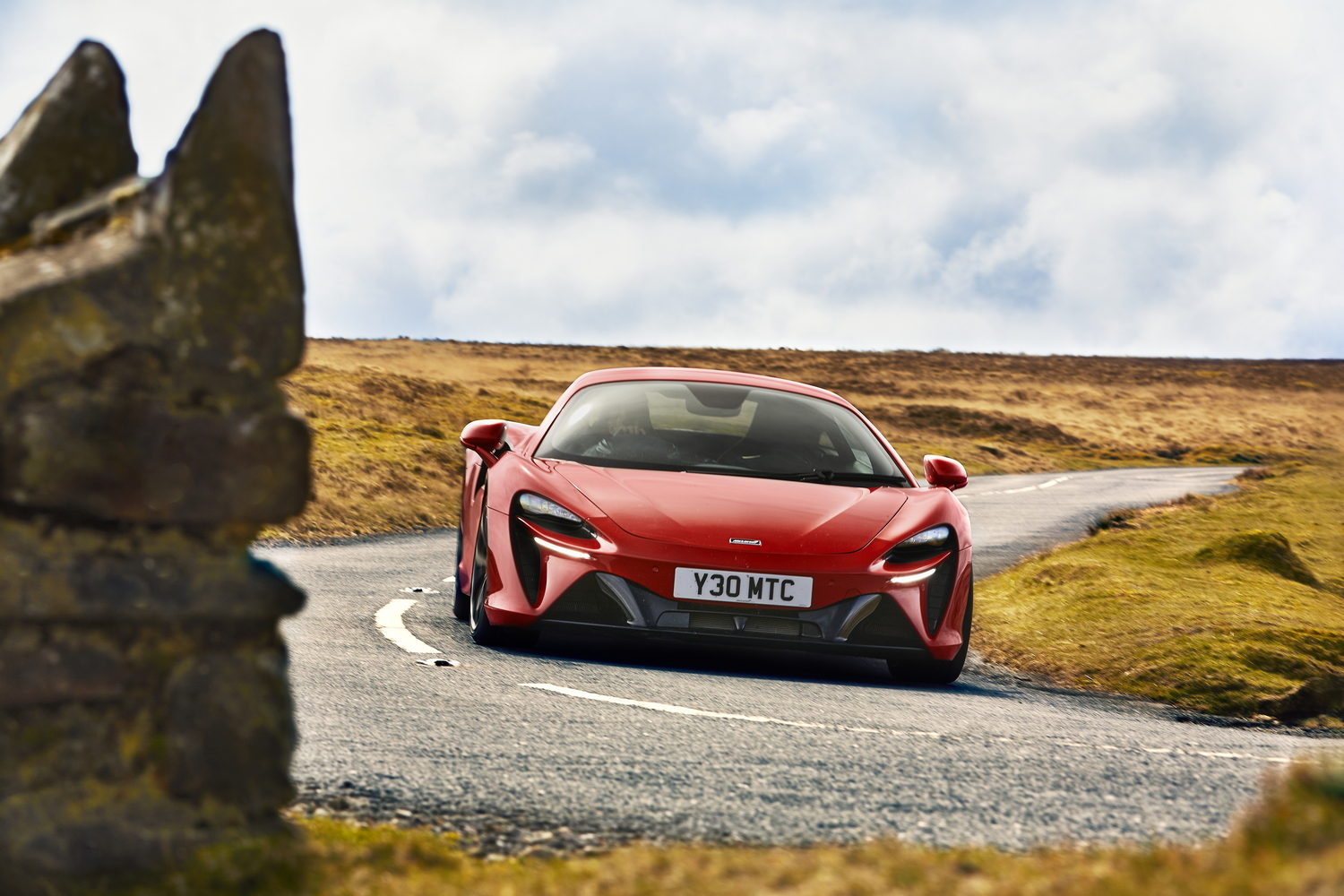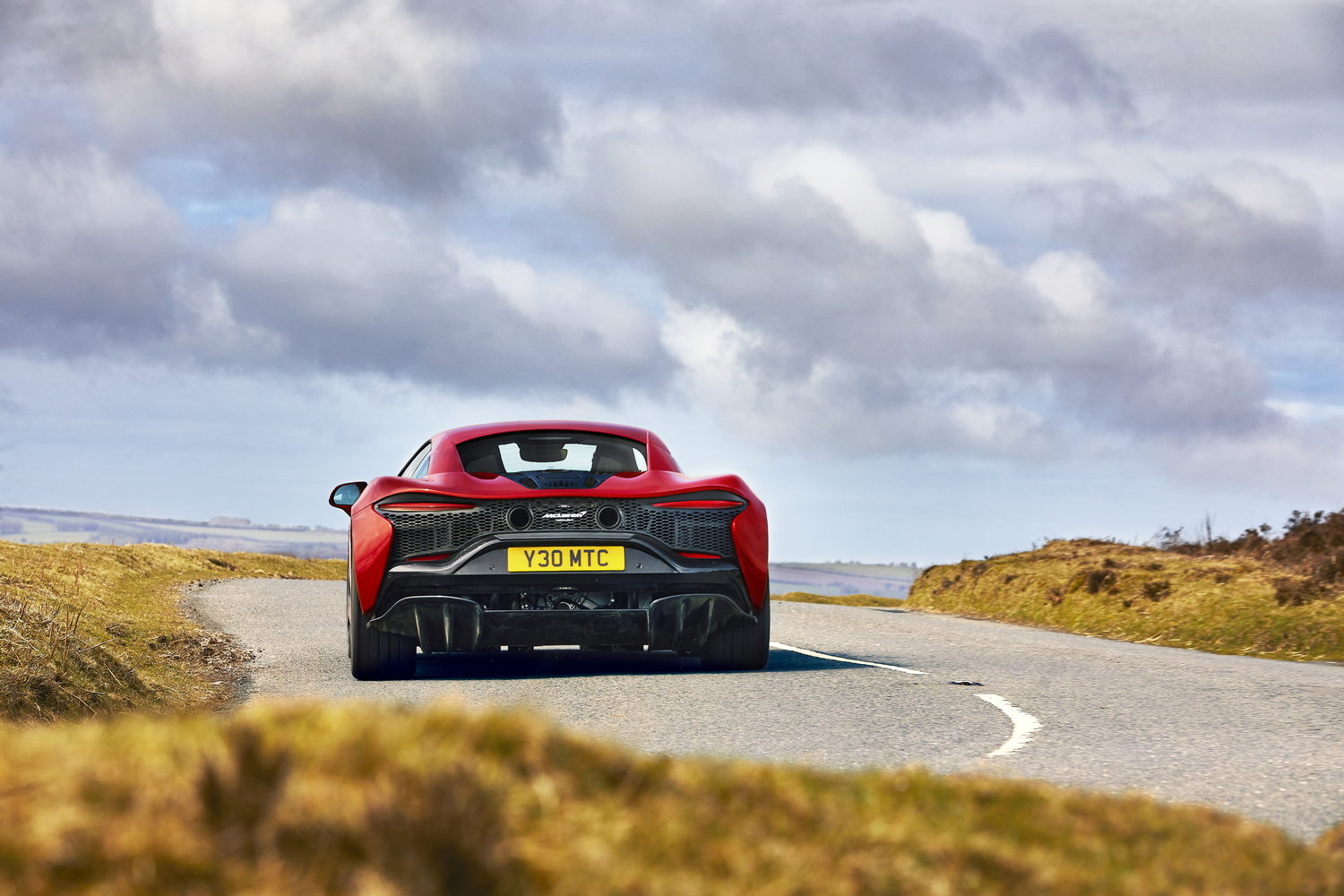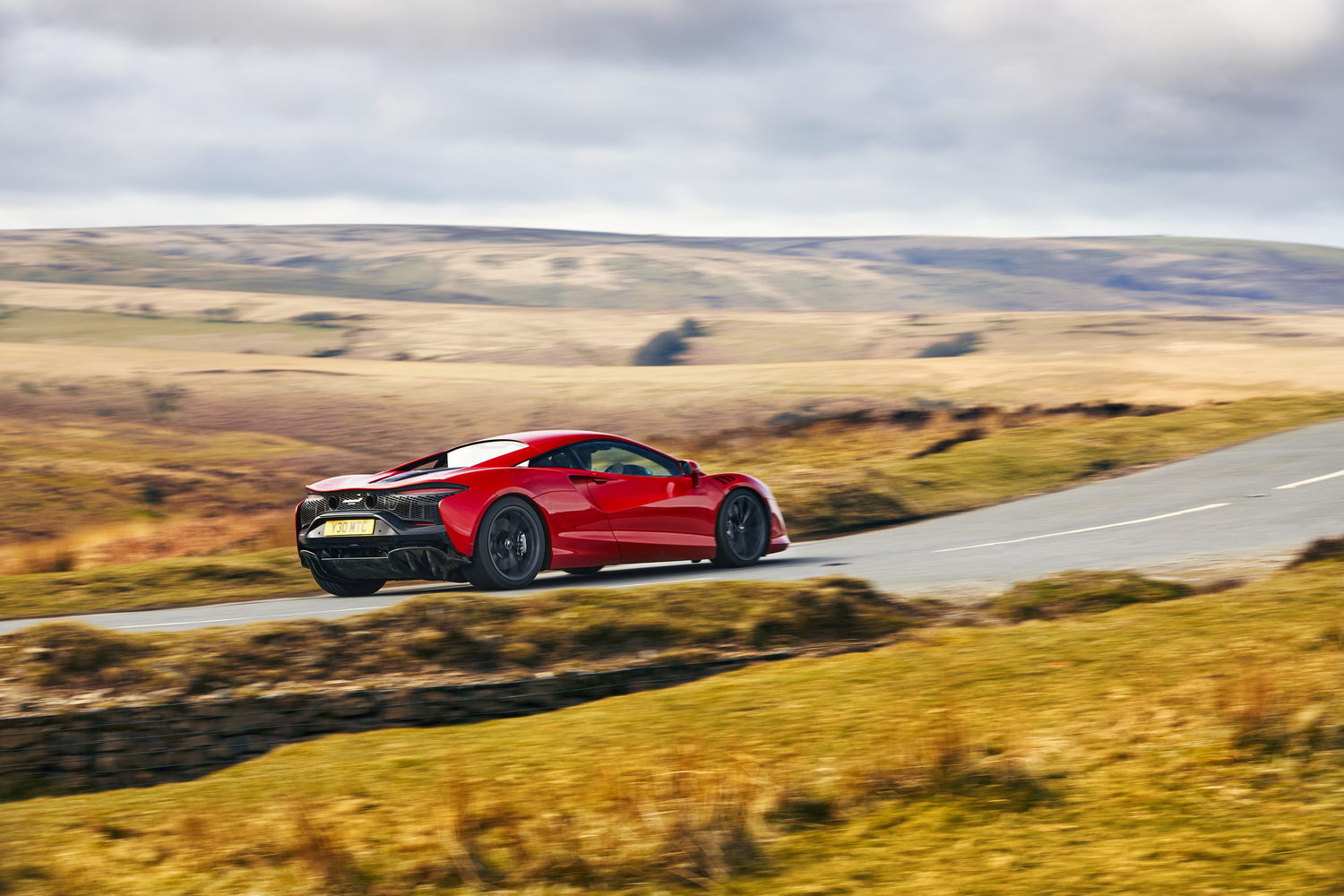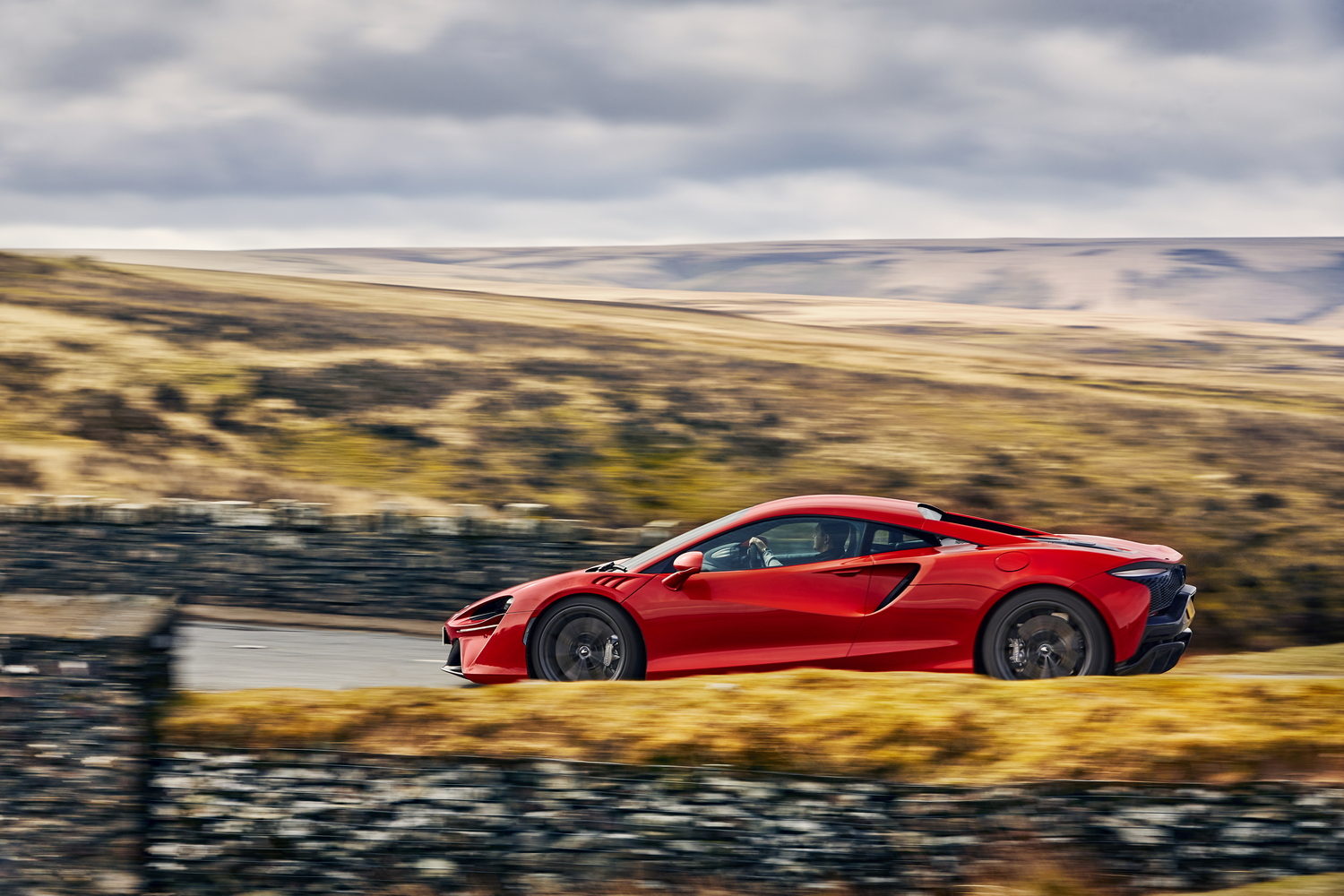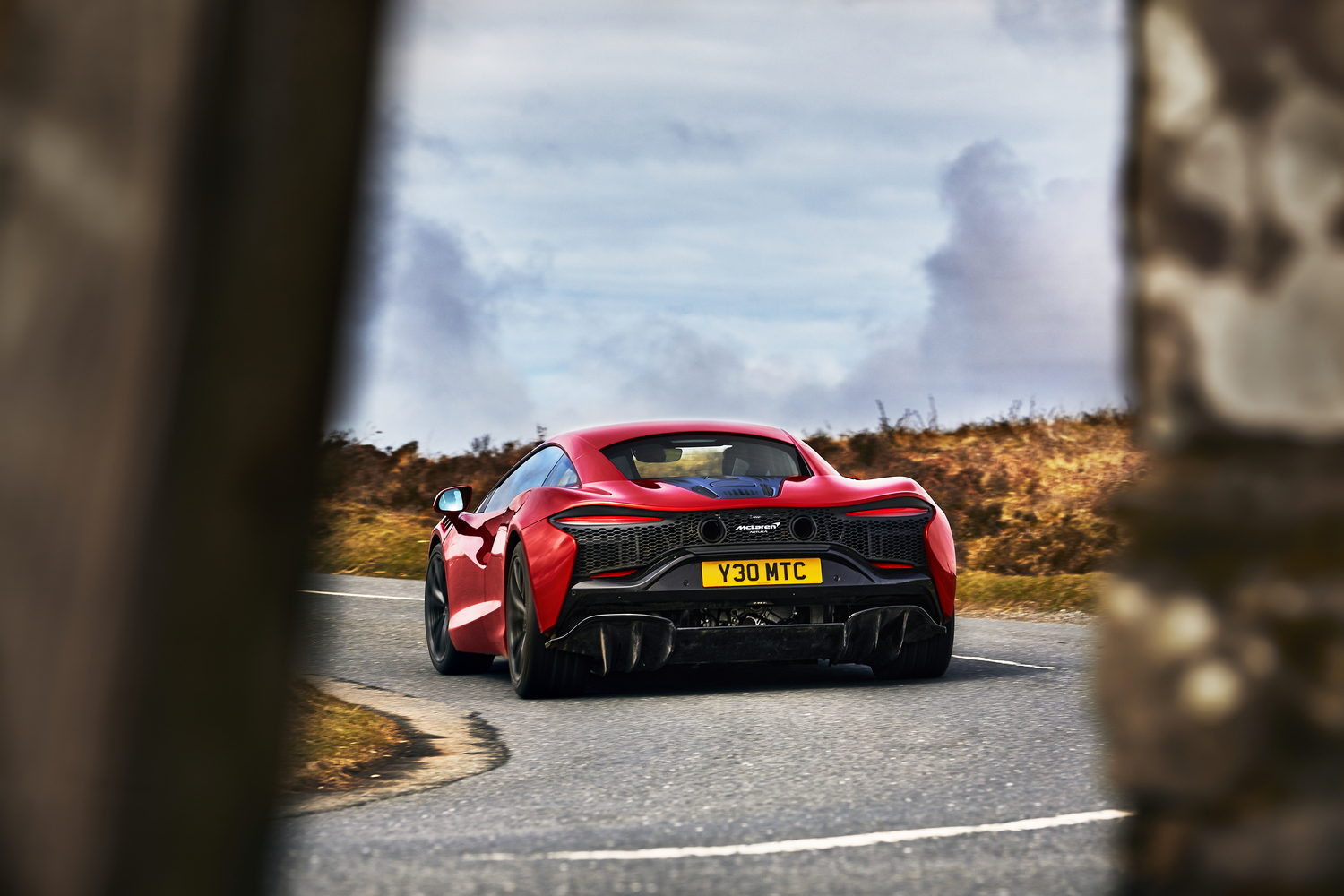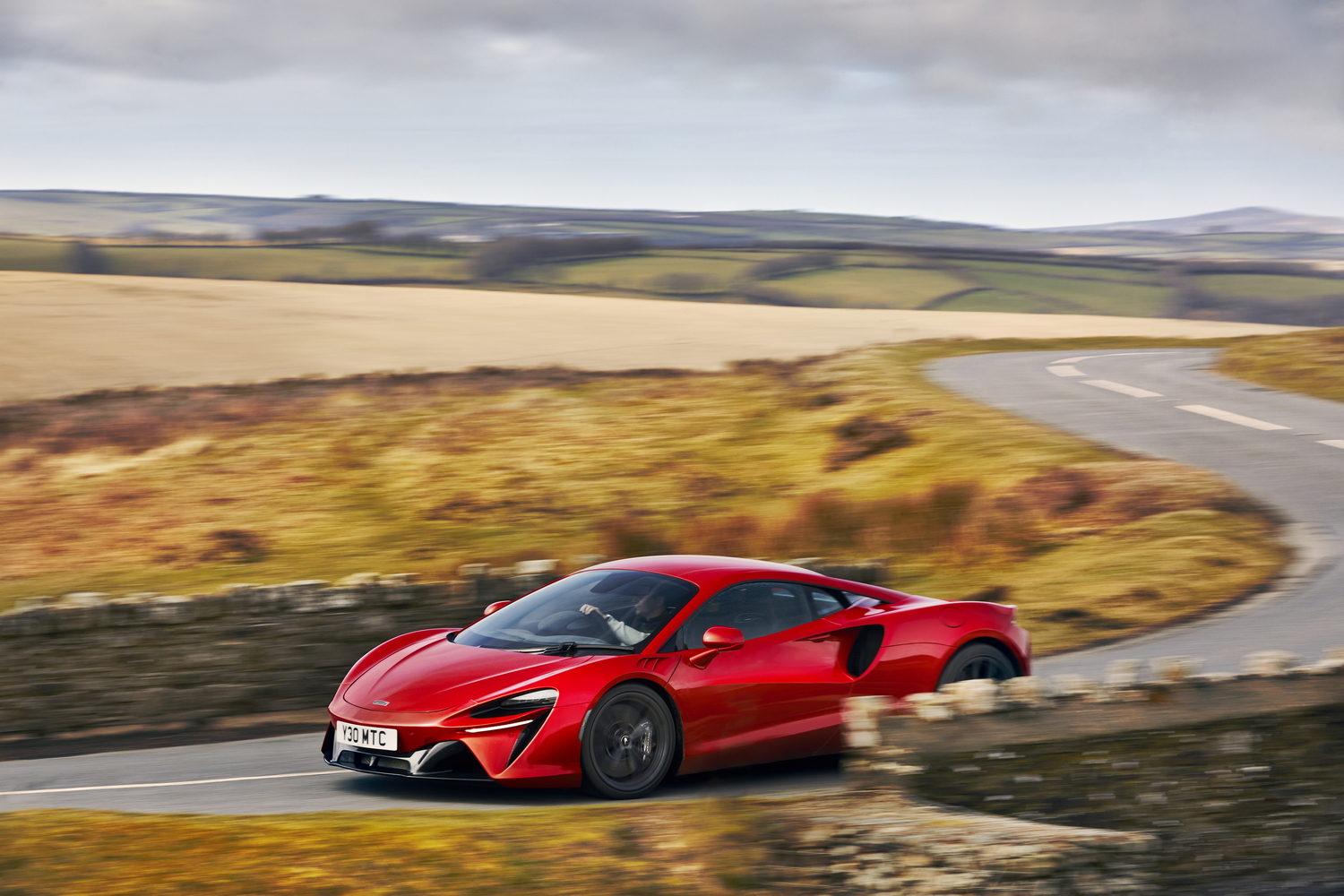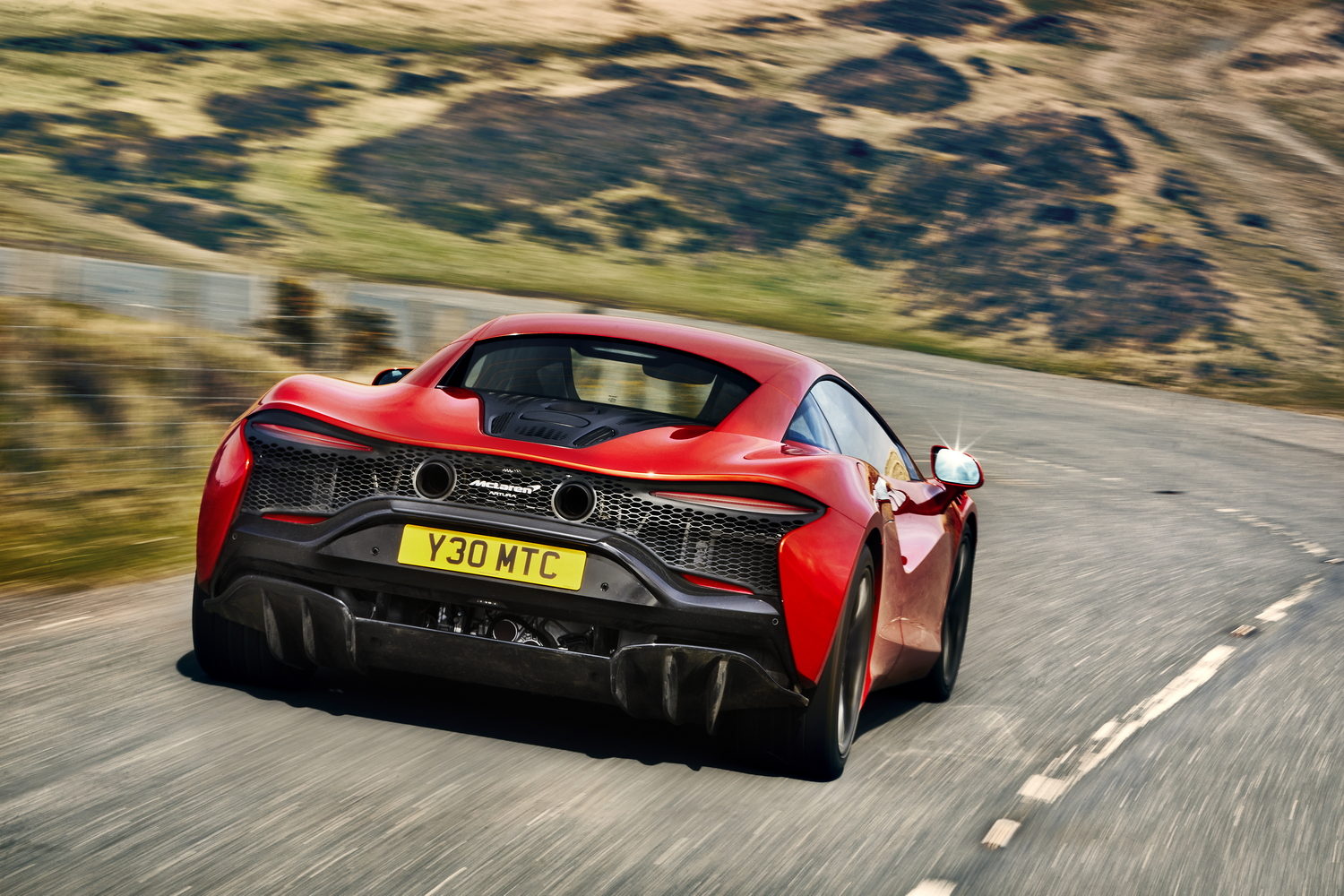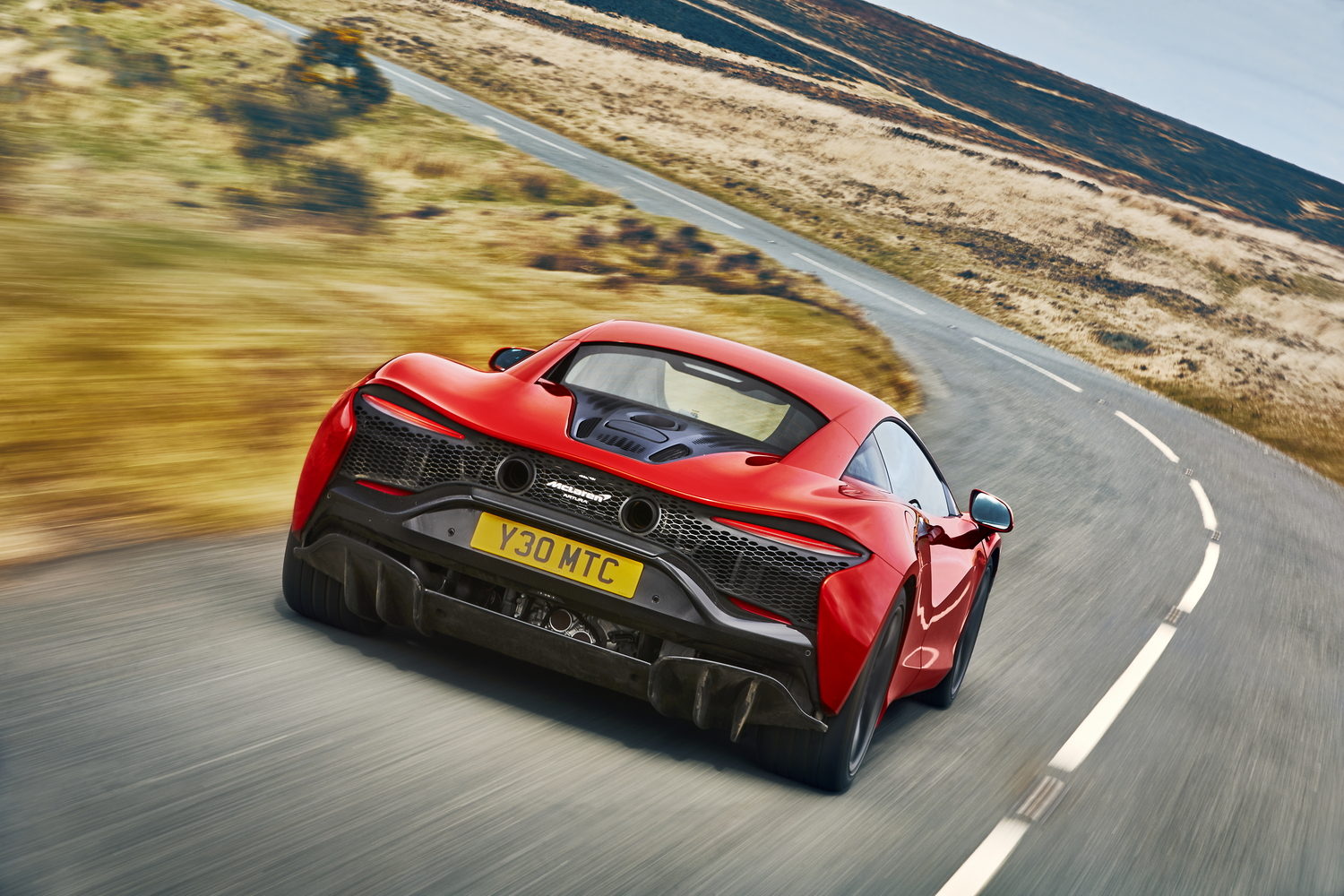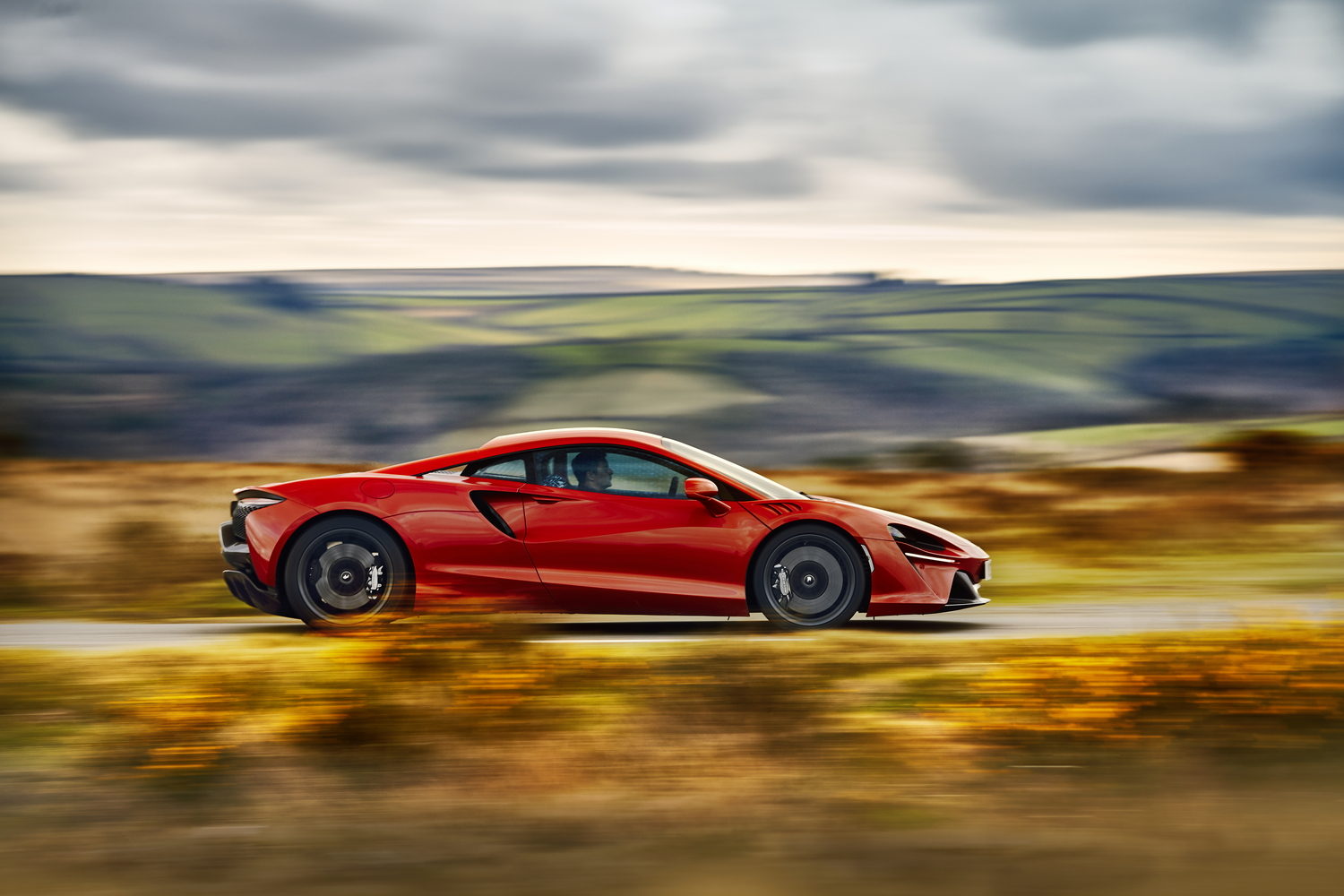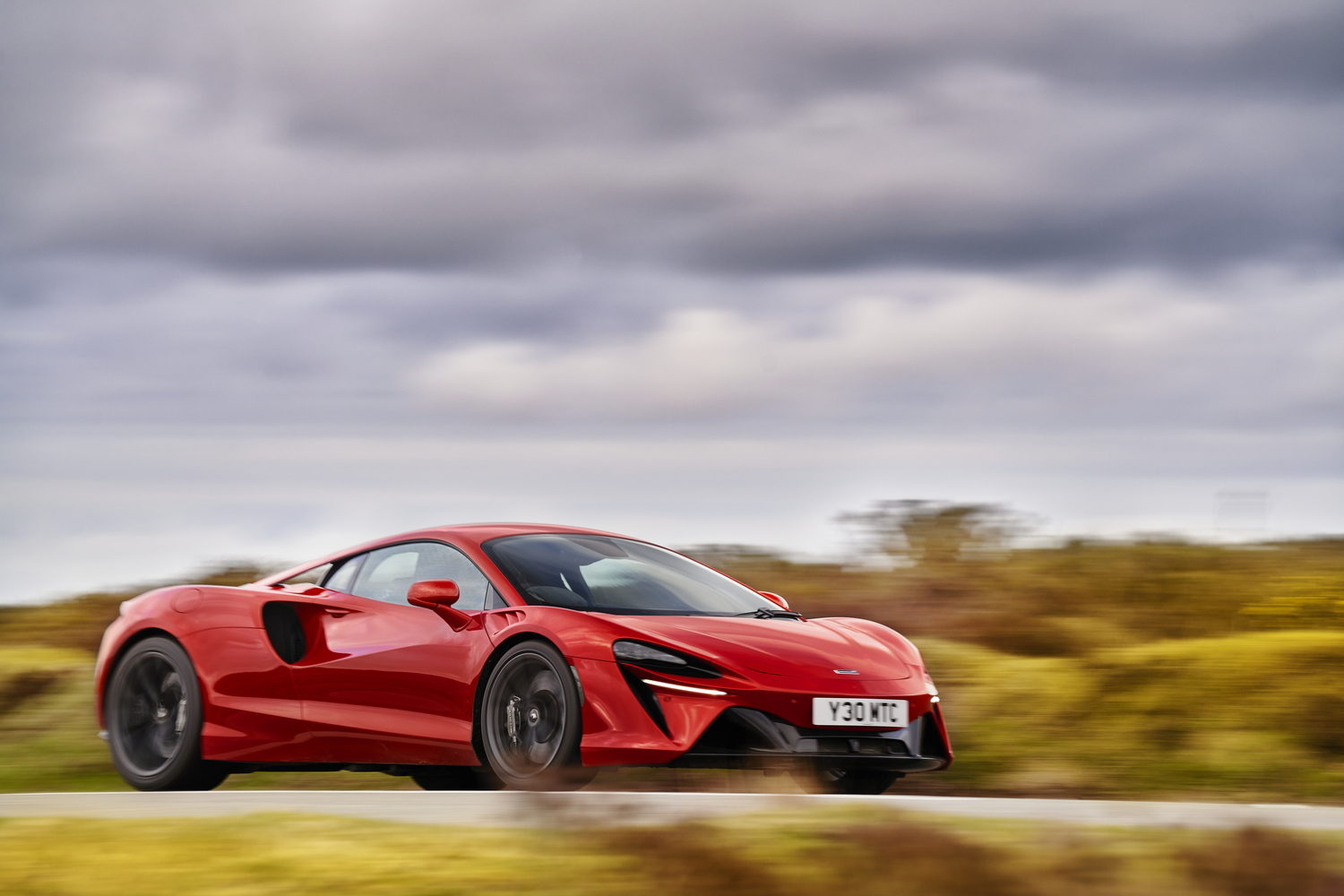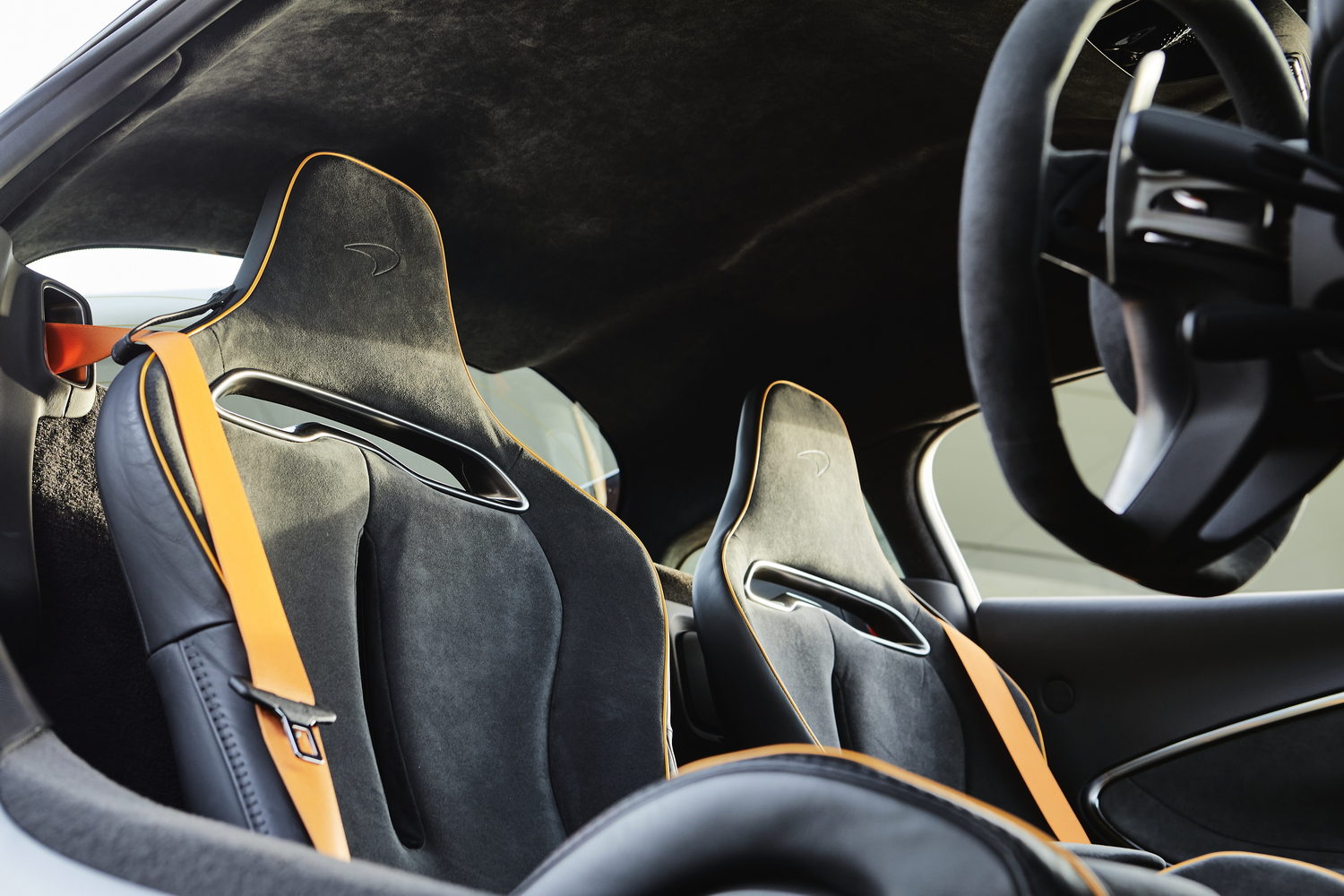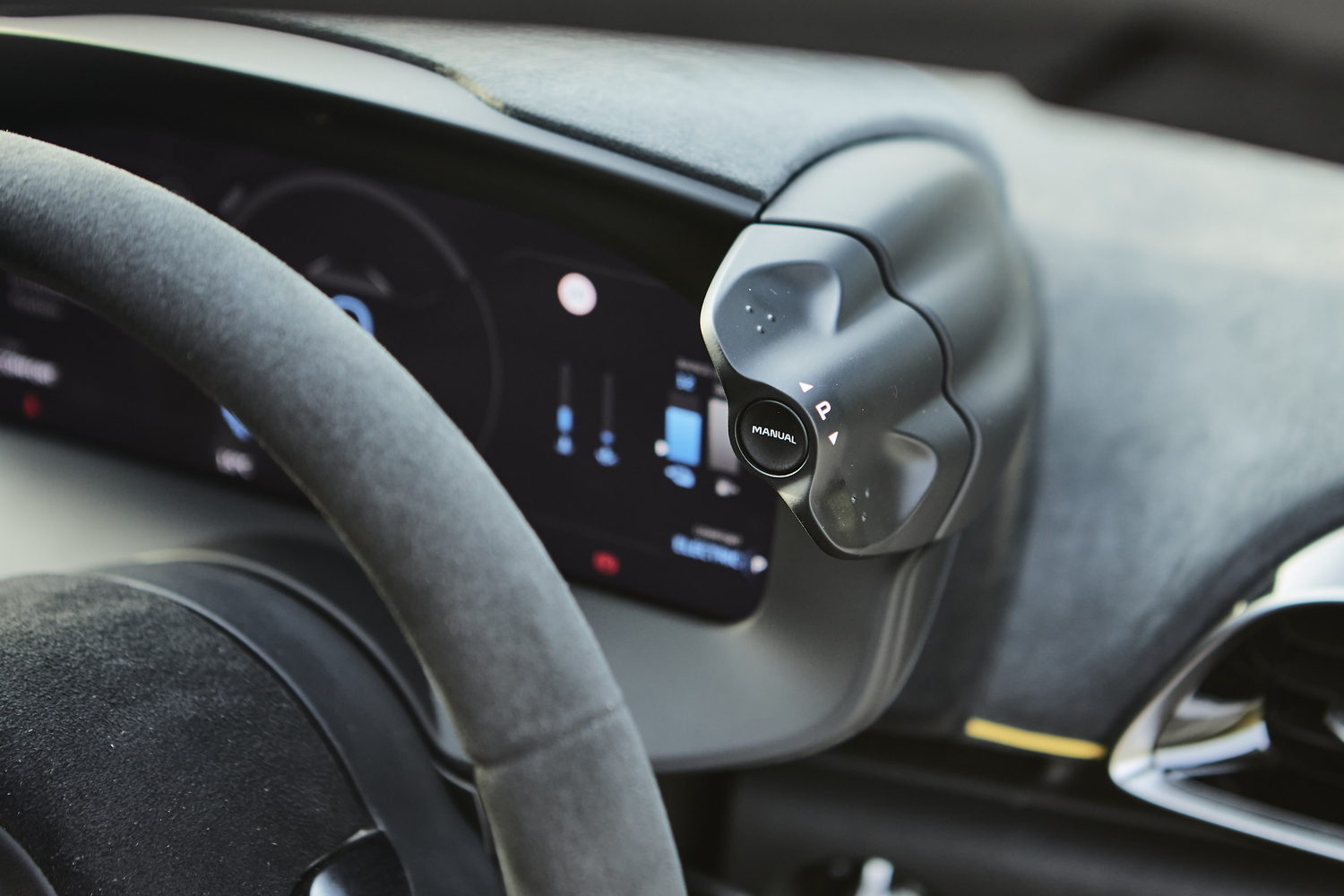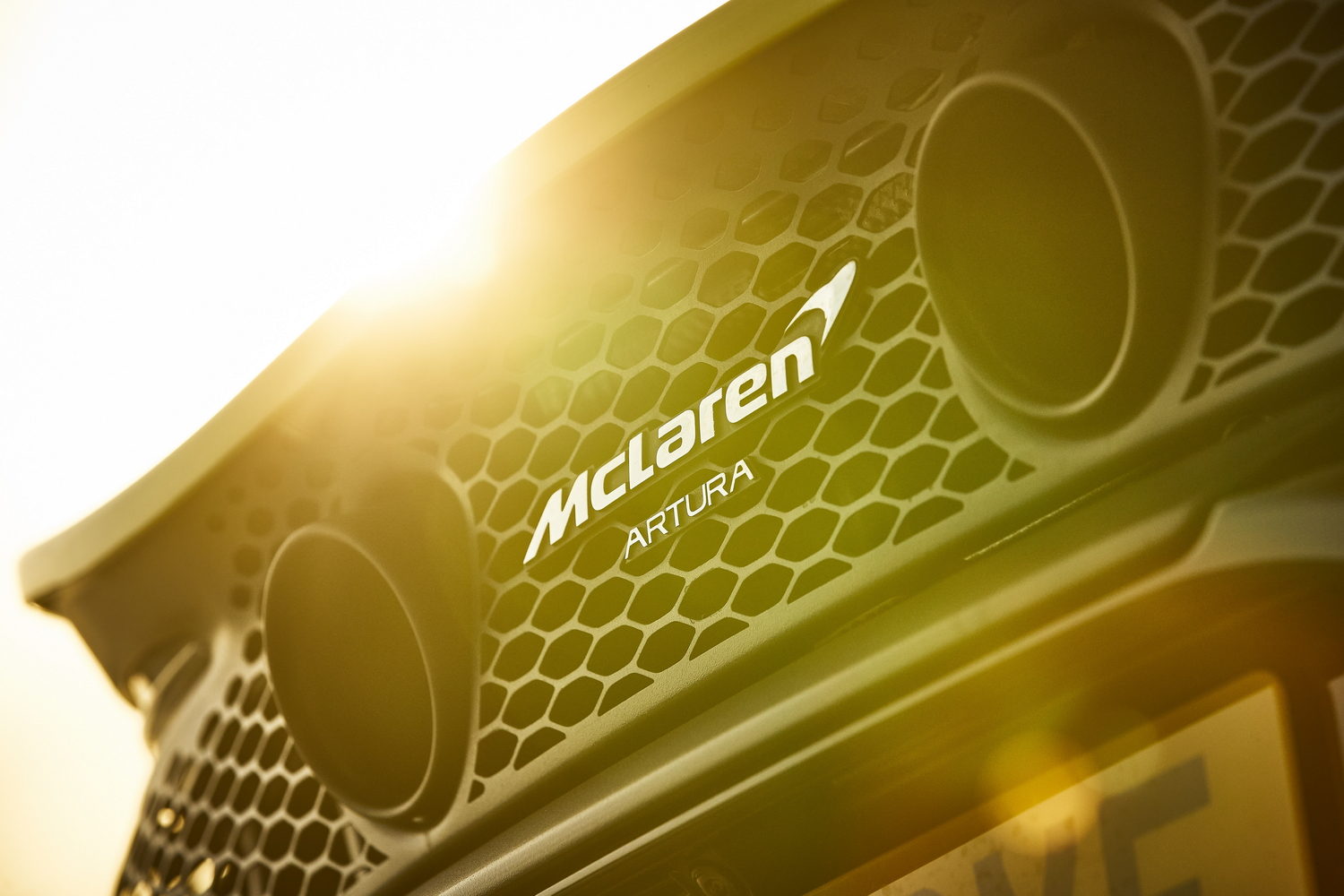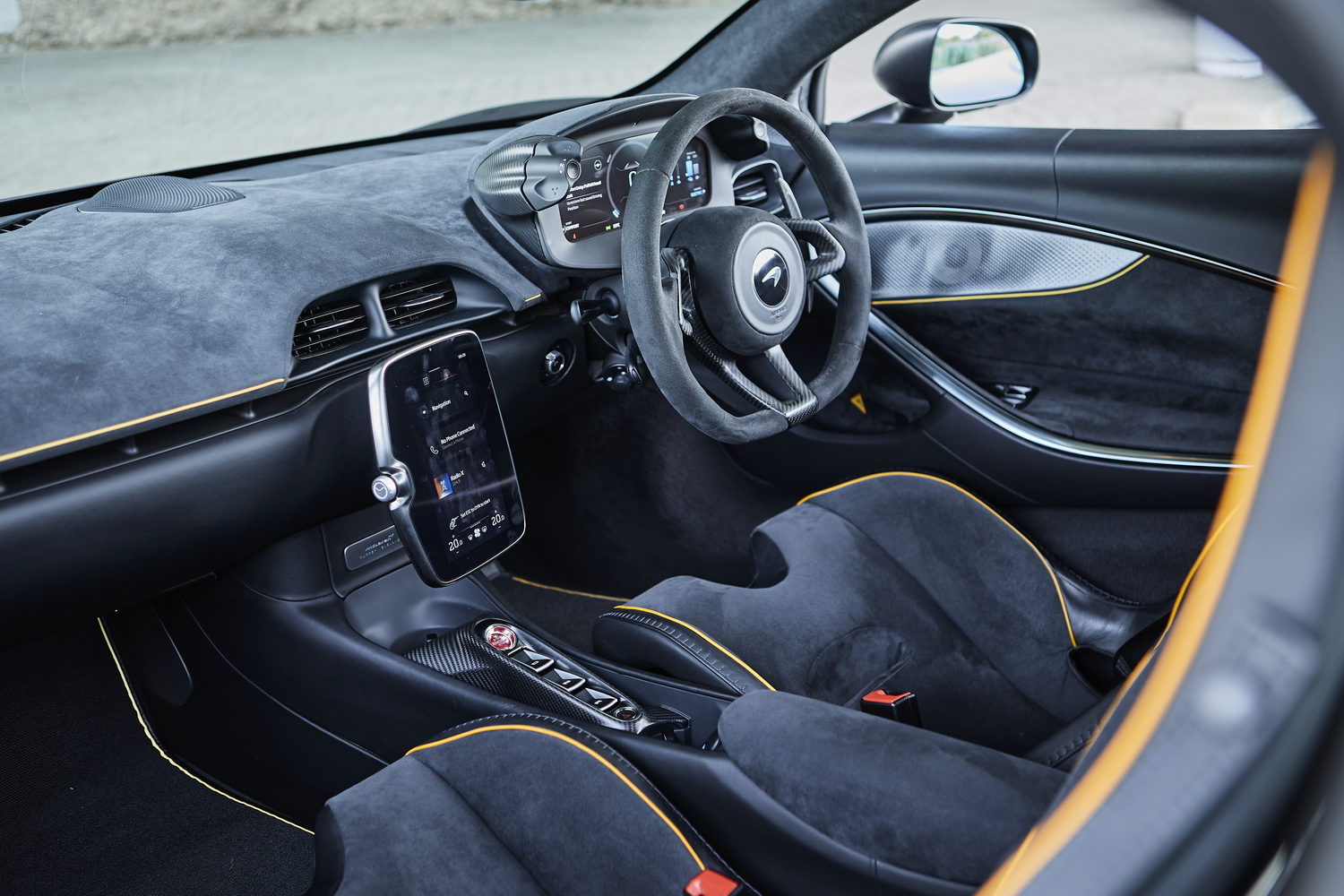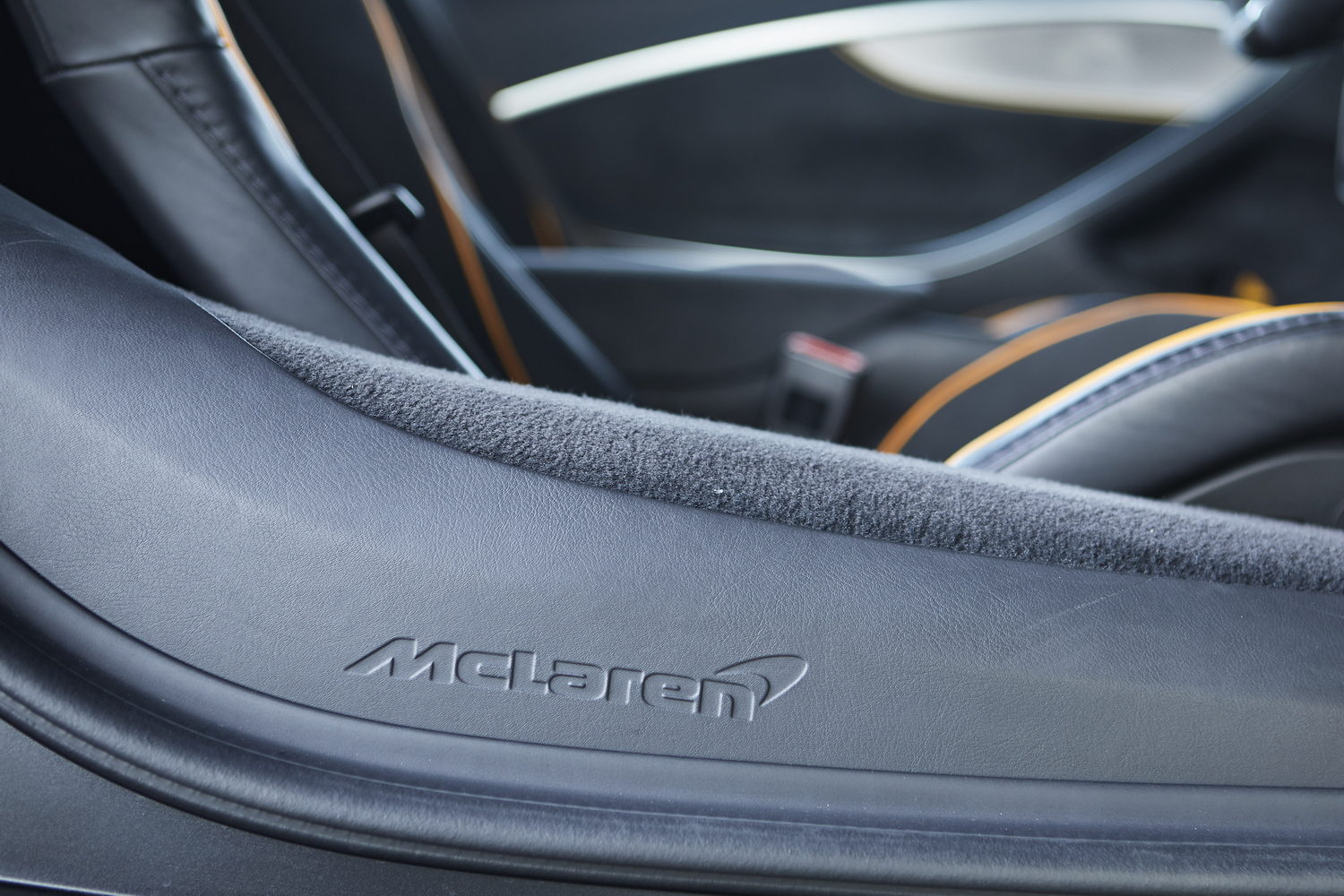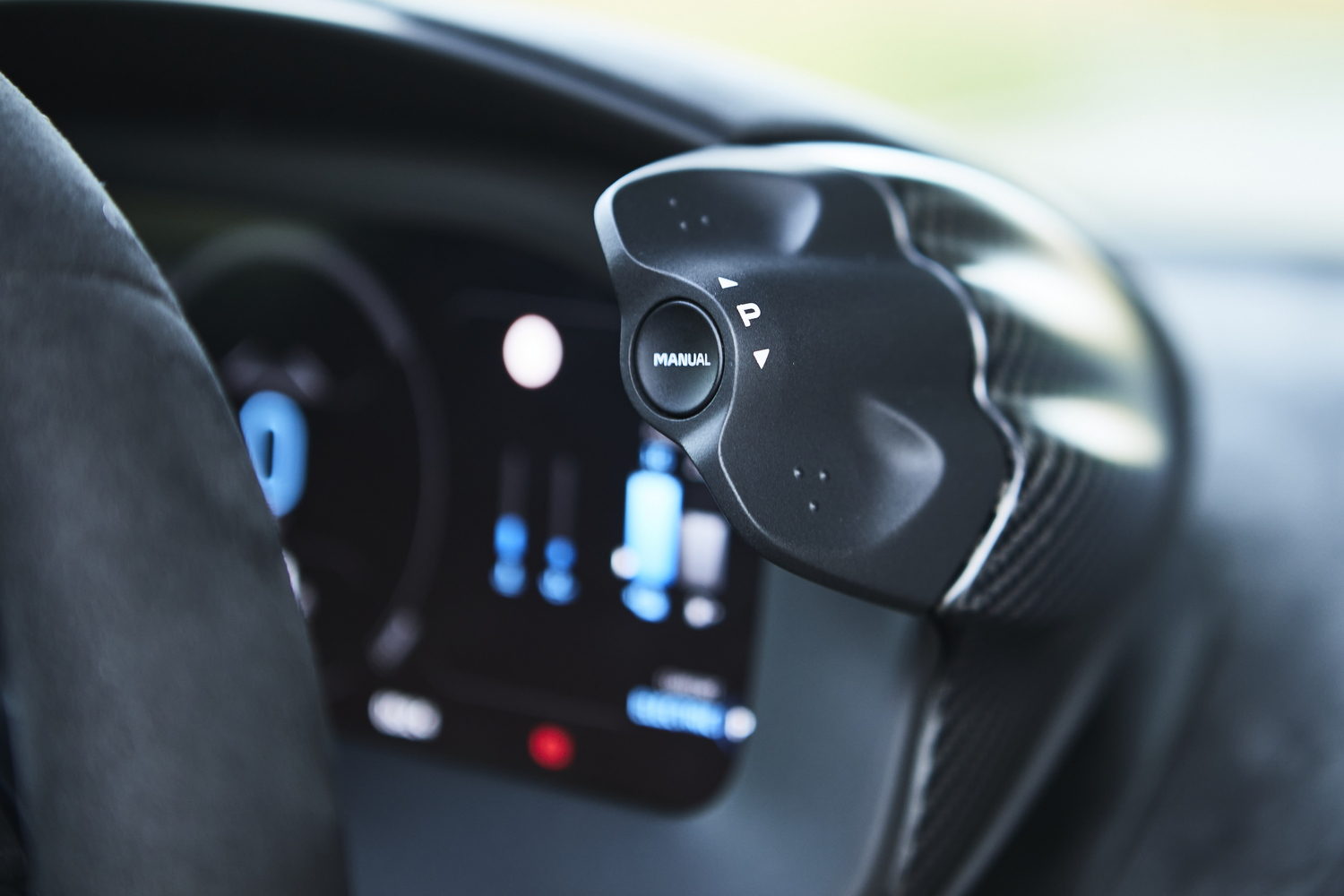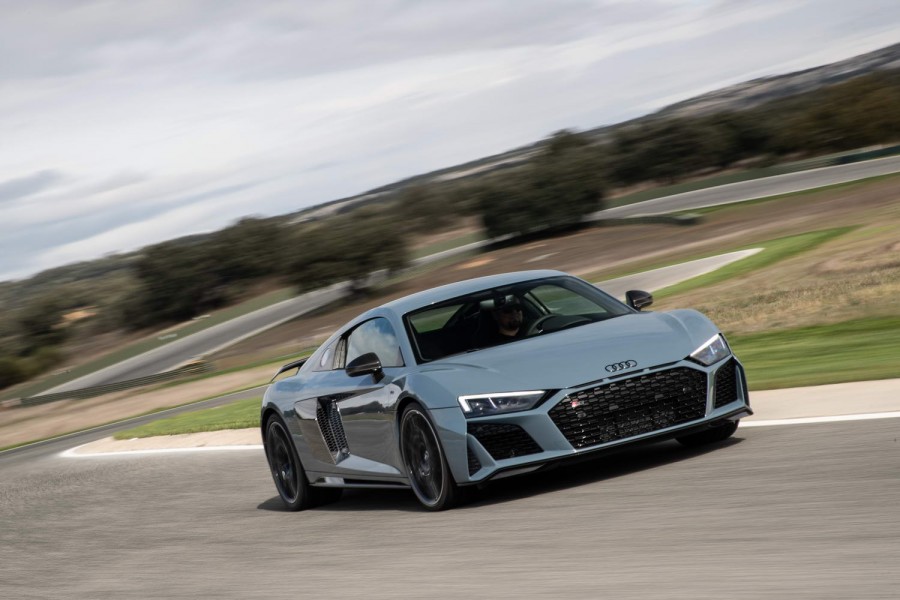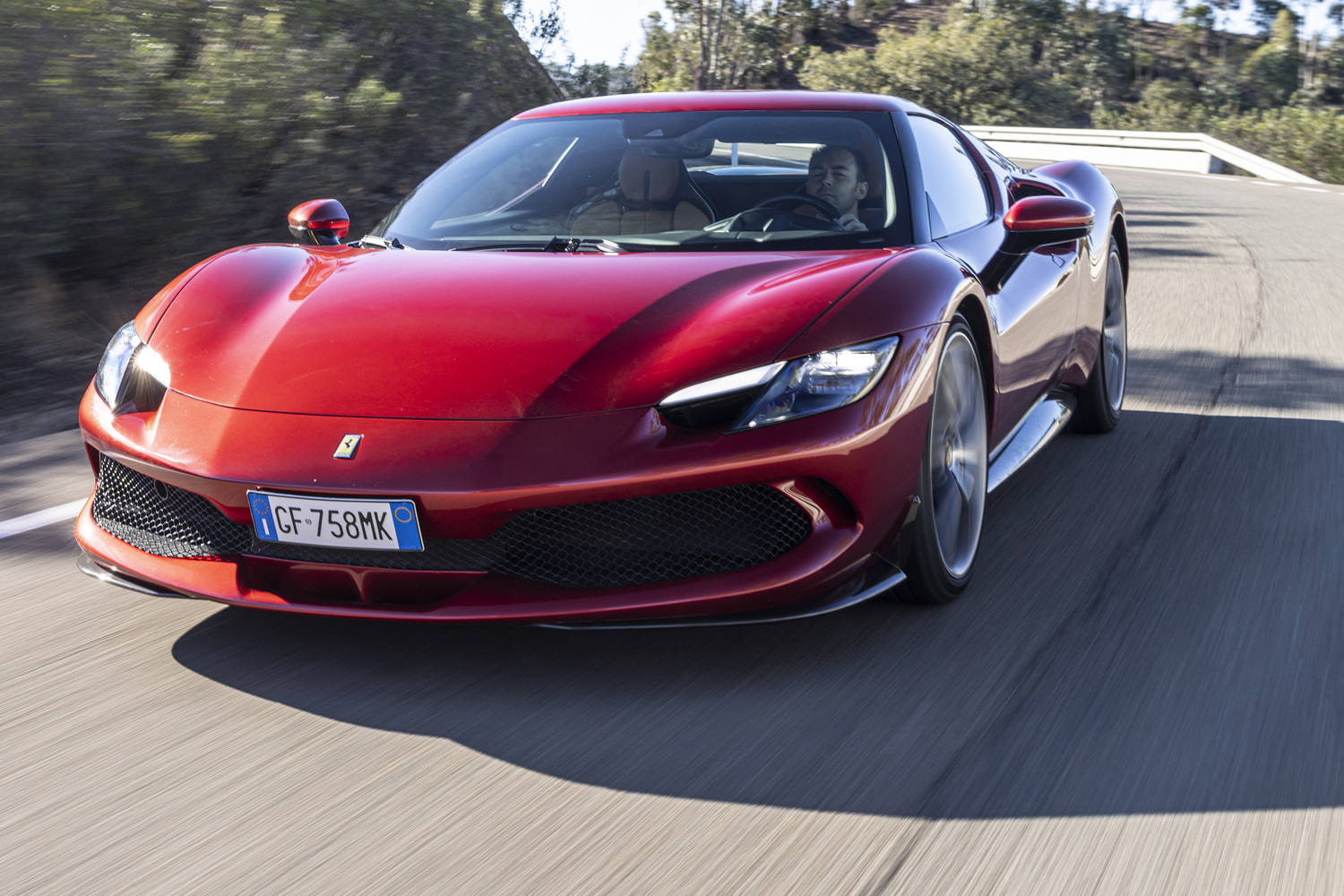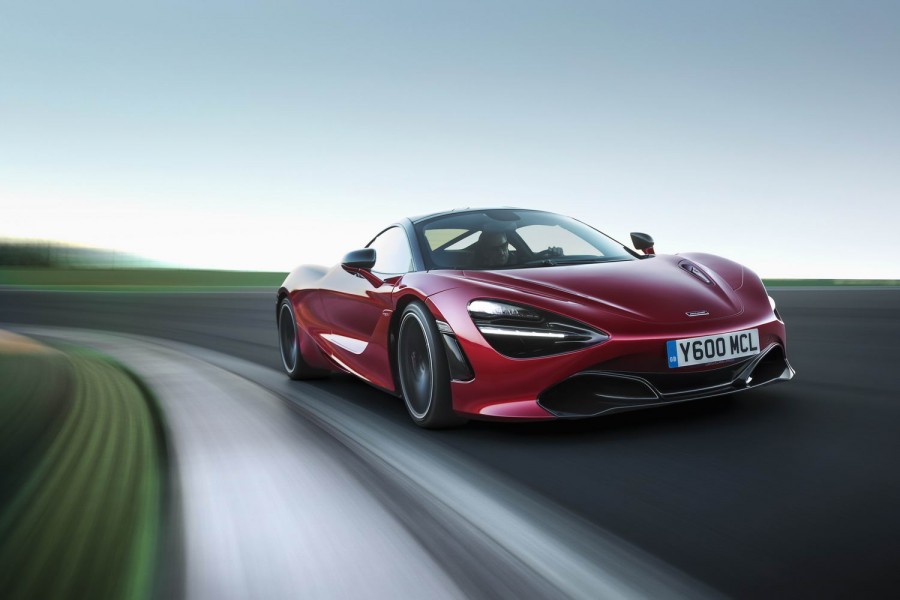McLaren has flirted with plug-in hybrid technology before, but this is the first time we've really seen it in anything other than a top-end, limited-production hypercar. Not that the new Artura is mainstream by any standards other than those of McLaren itself. Yet here is a new supercar designed to sit alongside the 720S in the range with marginally more focus on everyday usability. However, it's also trying to compete with the beautiful, brilliant Ferrari 296 GTB, which has already wowed us with its fantastic V6-based hybrid powertrain. So is the McLaren really up to the job?
In the metal
The Artura is designed to sit between the McLaren GT - the softest and most user-friendly model in the range - and the more hardcore 720S, so the British firm claims to have given it the most compact dimensions possible. Admittedly, a 4mm difference in length between the Artura and the 720S doesn't sound particularly noteworthy, but McLaren has still managed that reduction despite fitting the Artura with a space-hogging electric motor and battery.
And while the dimensions may not be dissimilar to those of the 720S, the Artura manages to look cleaner and less fussy. With fewer panel gaps to contend with and 'superformed' aluminium panels, as well as a huge single rear clamshell, the design feels minimalist and smooth. It doesn't look as busy as the 720S, yet it's still clearly very aerodynamic. It's arguably the best-looking car in the McLaren range.
Lift its upward-opening doors and the Artura shows off its much-improved cabin, complete with an updated touchscreen and a digital instrument display, as well as new seats. The one-piece Clubsport chairs hold you in place beautifully and they look good, too, but the real appeal is their impressive comfort. You could sit there all day without getting backache.
You might find the Artura's interior a bit minimalist, though. Whereas Ferrari peppers the dashboard with screens and touch-sensitive panels, McLaren has a single touchscreen in a simplistic frame, and aside from the digital instrument display, that's about it. The new screen is sharper and more responsive than in some other McLarens, but it's still a bit small and awkwardly shaped. It's a bit like having your phone in a holder, except a phone would have more functions. Still, with smartphone connectivity software included, it's pretty good considering it's the product of a relatively small car maker.
Similarly, the McLaren's steering wheel is better than that of the Ferrari, mainly because it has just one function: steering the car. While Ferrari bestows the wheel with indicator switches, drive mode selectors and even the engine start button, McLaren's has a horn in the middle and nothing else. Instead, you get an array of stalks behind the wheel, which help control the hybrid system and the cruise control, as well as the indicators and lights. It's a bit complicated at first, but you get used to it.
McLaren has also fitted new 'flipper' controls on the instrument binnacle, allowing you to change the modes for the chassis and powertrain with an outstretched finger. There's no need to take your hands off the wheel at all. Again, this is more intuitive than it sounds, but it takes a little acclimatisation before it feels completely natural.
From the off, however, customers will appreciate the Artura's cabin quality. Every material feels thoughtfully considered and every panel slots in perfectly alongside its neighbour. The whole thing feels solid and durable and premium all at once, easily justifying the lofty McLaren price tag.
But while the Artura is well built and reasonably well laid out, the practicality leaves something to be desired. Visibility is, admittedly, very good for a supercar, but though there are just two seats, there's no parcel shelf to speak of at the back. That isn't the end of the world, but there is a small space back there in a 296 GTB, and when space is at a premium, small differences count.
As usual with supercars, there isn't much boot space to speak of. There's a tub under what would normally be the bonnet, but that only holds 150 litres, which is marginally more than you get in a Porsche 911, but quite a bit less than you'll find in a 296 GTB. No, neither car is great for long holidays or trips to the golf club, but the Ferrari has a definite advantage when it comes to luggage carrying.
Driving it
McLaren has used some of the hybrid know-how gleaned from the P1 and Speedtail projects to create the new Artura, which should give you some indication of its attitude. While it's efficient by supercar standards, the Artura is very much a speed machine, and the electric motor is there to assist the petrol engine in its quest for performance, as much as it is to reduce emissions.
The engine in question is a twin-turbocharged 3.0-litre V6, which, as you'd expect, is mounted behind the seats and in front of the rear axle. Tagged to that is an eight-speed automatic gearbox that incorporates an electric motor, which is in turn fed by a lithium-ion battery pack. With 7.4kWh of usable capacity, it isn't especially large, but the motor is powerful enough to drive the car at relatively low speeds until the battery runs flat. This is particularly useful for reversing (the Artura doesn't have a reverse gear, and instead just uses the electric motor), or if you want to leave home in the dead of night without disturbing the neighbours. According to the official figures, you can take the car around 31km on electricity alone, although we found something in the region of 25km is probably more realistic.
As with other plug-in hybrids, those who want to stop and charge the battery at this juncture can do so, just as you would with an electric car, but you can also boot up the V6 petrol engine, which unlocks the car's full potential. Together, the raucous petrol engine and the screaming electric motor send up to 680hp and 720Nm of torque to the rear wheels, and although the 296 GTB has 830hp, we'd suggest that 680hp is more than sufficient in a lightweight car.
And the Artura is very light. The whole powertrain is bolted to McLaren's carbon-fibre lightweight architecture, which pairs a carbon-fibre tub with aluminium spaceframes and connecting 'nodes' to produce a monocoque structure that's very strong, but also very light. Even with the battery and the two motors, the whole thing weighs less than 1.5 tonnes, and that means the power-to-weight ratio is enormous. So enormous, in fact, that the Artura can get from 0-100km/h in three seconds flat, and on to a top speed of 330km/h.
While it's true that those figures don't look especially outstanding alongside the 296 GTB, which accelerates faster and has a higher top speed, the Artura has a less obvious ace up its sleeve. Because while (relatively speaking) it may not be that fast from 0-100km/h, the way it gathers speed is still outrageous. Getting from 0-200km/h takes just 8.3 seconds, and after a total of just 20 seconds with your foot to the floor, the Artura will be nudging 300km/h. Naturally, you can't use that power on the road, but it still has its uses.
That's because of the way the Artura delivers its performance. With the electric motor filling in when the engine is at its least potent, such as during gear changes or while the turbochargers are still spooling up, the acceleration is relentless, and overtaking slow-moving traffic is hilariously simple. Although to an extent, that is dependent on the drive mode you choose.
In electric mode, the car simply cruises about on electrical power alone, whereas the comfort setting aims to provide a relaxed hybrid experience, with less aggressive gear changes and the petrol engine cutting in when needed. In truth, though, that setting feels sluggish and slack at all the wrong times, and it exposes the worst in the Artura's behaviour. The two powertrains operate like a comedy double-act, getting in each other's way at some times and leaving propulsion to the other at other moments.
Generally speaking, it's better to put the powertrain in Sport mode, which combines the might of both powertrains to operate more smoothly. Of course, it's much noisier - the engine is running almost all the time - but the system feels more cohesive. Track mode, meanwhile, is a little too savage for regular road use, and it holds on to gear ratios for longer, which means there's even more noise whether you want it or not.
Similarly, the Artura's ride and handling are impacted by the chassis settings. The comfort mode is miraculously soft, with a ride that's as supple as any sports car you care to name. It's hardly Rolls-Royce levels of comfort, but for a supercar it's remarkably smooth. In fairness, it retains some of that smoothness in Sport mode, but it feels considerably stiffer than before, and you get a bit more body control. Of course, the Artura is still very stable whatever you do with it, but it feels tauter in the Sport setting, and that gives you even more confidence when changing direction.
Track mode, as the name suggests, is really only suitable for circuit use, because it makes the ride really bumpy and bobbly, but it isn't that much worse than some other supercars and it accentuates the brilliance of the Artura's chassis, bringing the best of the body control and balance.
The steering, on the other hand, is much less sensitive to the mode in use. Yes, it feels a bit heavier and more sensitive in the Sport and Track modes, but it's sublime even in the most comfortable setting. McLaren says it isn't ready to use all-electric power steering just yet, so you still get hydraulic assistance in the Artura, and the feel is sensational. Every twitch and bump of the front wheels is transmitted to your hands, and that means you have perfect mastery of what's going on at the front. You know instinctively what the wheels are doing, and that inspires enormous confidence.
Better still, however, is the way in which the Artura turns. Although it feels very stable, McLaren has given the Artura pin-sharp agility that lets you throw it into corners with reckless abandon. It doesn't feel as light on its feet as the 296, but it feels more stable and dependable. Again, they're different means to the same end. Driving the Artura is a delight.
But we can't go without paying some tribute to the brakes, which seem to conjure some sort of magic to stop this bullet. With powerful carbon-ceramic brake discs all round, the Artura has enormous stopping power and at 100km/h, it can be halted in just 31 metres. Normally, such big stops might unsettle a car, but the Artura stays planted throughout, and the numbers simply disappear from the instrument display. It's remarkable.
Honourable mention should also go to the noise, which is dramatic in the extreme. And though the Artura is a hybrid with two fewer cylinders than its siblings, it still very much makes a supercar sound. The engine barks into life, and then roars its way up the rev range, offering a deeper and more hearty noise than the Ferrari, which seems to scream its way around the rev counter. But when the engine is off, the Artura is very refined, without too much wind or road noise to contend with. In many ways, it's the best of both worlds.
What you get for your money
With no McLaren dealers on the island of Ireland, let alone in the Republic, those who want an Artura will have to import one. Prices start at around £190,000 in the UK (about €215,000 today) before you've specified any options or paid to bring the car over, though its low CO2 rating will help keep the VRT down to 12.75 per cent. It'll still end up being a big number landed here, but you get a lot of car in exchange.
Summary
The Artura is always going to be compared with the Ferrari 296 GTB, but the two cars feel quite different, despite their similarities. In many ways the McLaren is the better car, with a smarter and more comfortable interior, as well as better build quality and efficiency. But the Ferrari comes with that sprinkling of intangible magic that makes it the hybrid supercar of choice - at least in our view. However, if the Ferrari 'thing' doesn't float your boat, the Artura is a spectacular way to spend your hard-earned cash.

